First Cruiser in Split after 9 Months Bringing 1200 Tourists on Friday
June 17, 2021 - The first cruiser in Split after 9 months will sail into the Split Port on Friday, bringing 1,200 guests with it.
Souvenir shops, get ready! On Friday, after a very long time, the first big cruiser arrives in Split, bringing about 1,200 passengers, who should stay there for ten hours, reports Slobodna Dalmacija.
As Vice Mihanović, director of the Split Port, revealed, the luxury cruise ship MSC Splendida should arrive at the external berth of the Split City Port on June 18 at 7 am, and the departure was announced the same day at 5 pm.
"Splendida comes from Corfu, and passengers will leave the cruise to the city in an organized manner, by bus and walking tours. We hope for a good epidemiological situation so that as many ships with tourists as possible enter Split in the coming months," says Vice Mihanović.
Admittedly, a cruiser also arrived in Split before Splendida on Monday, but it is a far smaller ship - the Belle de l’adriatique. The last major cruise ship to Split was seen last September, followed by months of drought that coincided with a bad epidemiological picture in Croatia and around the world.
"Currently, in the announcements for this year, we have the arrival of 155 cruisers in Split, but all this is very uncertain and depends on the pandemic. Failures are common. All this is far from the record 2016 when 286 cruisers came to Split, but the situation is getting a little better, and it will largely depend on ourselves," says the director of the Split Port Authority.
MSC Splendida is a huge ship, 38 meters wide and 333 meters long, can accommodate over three thousand passengers and has over a thousand crew members. There are 1,637 cabins on the cruiser, including 43 for disabled guests or tourists with reduced mobility. It has as many as 18 decks, including 14 for guests.
Splendida offers a wide selection of restaurants, bars, and lounges, four swimming pools, a well-equipped gym, and a luxury spa, award-winning family activities, and facilities, as well as a luxurious MSC Yacht Club with 71 spacious suites and all-day butler service.
As reported by MSC Cruises, the Splendida is their fifth ship to begin regular sailing this summer. MSC Grandios and MSC Seaside sail the western Mediterranean. The MSC Orchestra recently embarked on cruises in the eastern Mediterranean. The flagship of the MSC Virtuos fleet cruises the United Kingdom with reservations open to British guests only.
"They are fully supported by the leading health and safety protocol, under the protection of which tens of thousands of guests, as well as crew members, have been safely sailing onboard the MSC Grandios since its first presentation in August 2020, and protects local communities that visit. MSC Magnifica will continue sailing the eastern Mediterranean on June 20 starting from Italy - they will regularly sail to Split where they will achieve 20 ticks this year," said MSC.
Follow the latest travel updates and COVID-19 news from Croatia HERE.
For more on travel in Croatia, follow TCN's dedicated page.
800,000 Passengers at Split Airport this Year? UK Market Will Decide
June 15, 2021 - How many passengers at Split Airport will be recorded this year? That hugely depends on the UK market.
The European Center for Disease Prevention and Control (ECDC) green list means unhindered movement without the risk of COVID-19 infection, and that is exactly what Croatia wants to be this summer, reports Slobodna Dalmacija.
After Croatian counties were made green by Switzerland and almost entirely by Germany (except Varaždin and Međimurje), it is expected that a good epidemiological picture will remain in force, which is a basic prerequisite for more intensive tourist trips to the Adriatic.
They are also hoping for that at Split Airport, which received about 10,000 passengers last weekend, mostly in 55 large commercial aircraft, 2,000 more than the previous one.
"That number of flights is not small. If we know that companies have to take care of occupancy (this factor is significant because they will not fly if the plane is empty), then this is a good indicator, because last weekend we had a larger number of passengers on a similar number of flights, which is a sign that occupancy is better. And that again gives hope that all these flights will stay, and the companies will increase their number," said Pero Bilas, assistant director of Split Airport, where, of course, projections have already been made for this summer.
"If the favorable epidemiological situation is maintained from June to September, i.e., in the four peak months, we can expect approximately 800 thousand passengers. This can be divided so that there are ninety to one hundred thousand of them in June and the same number during September, and about three hundred thousand in July and August. However, the projection contains several elements, and one of them is that companies have the right to cancel the announced capacities up to 50 percent. But the first and basic condition, without which one cannot do, is the epidemiological picture. We need to stay green. Without that, there is nothing," adds the assistant director.
May, in which the turnover of approximately 33 thousand passengers was realized, with 14 markets in which 15 airlines flew, was a good announcement of what awaits us in the coming period. Although the Airport is already recording an increase in traffic in the first half of June, confirmations of flight announcements for longer than three weeks are ungrateful given the changing variability of the epidemiological situation in Croatia and the world.
"In May, we had 14 markets, and now, in June, we are at 24. This is almost the whole of Europe, along with Russia, Ukraine, and Serbia. And that’s great considering the circumstances. We will now have 30 to 40 airlines, which have traditionally flown to us. Croatia is open, there is exceptional interest, desire, and will, but currently, a situation is in force when you offer something and wait for a reaction," explains Pero Bilas. He says that it is excellent that Germany and Switzerland have put us on the green list and that we currently share the same fate with similar countries, such as Spain, France, Italy, Greece.
But the big question mark remains the UK market. Rising numbers of those infected and hospitalized because of COVID 19 are a subject of 'serious concern,' British Prime Minister Boris Johnson said last weekend, acknowledging that he was less optimistic about opening the country than he was in May. Recall, on May 17, Brits could start hanging out indoors, in restaurants, pubs.
"It is clear that the Indian variant is more contagious, and it is also true that the numbers are growing and that the level of hospitalizations is rising," said the Prime Minister for Sky News.
"And now we have the following situation with Brits - we have been quite open since the beginning of April, but the catch is in their return to their own country. They need a negative PCR test at boarding, not older than 48 hours, then isolation, and again a PCR test after two and eight days. When you add up the time, cost, and energy invested in a return, it’s complicated for people. In addition, the number of infected people, regardless of vaccination, is growing slightly. Obviously, this Indian strain is spreading. And I don't have to tell you what the British market is to us. London has been our number one destination for decades, and it will definitely be felt in Split," says the assistant director of Split Airport.
From July 5, three flights from Amsterdam to Split
Optimism, for example, is fueled by the news that the Dutch national airline Royal Dutch Airlines is introducing a third daily flight between Amsterdam and Split on 5 July. The KLM plane will arrive at the Split Airport in the evening (21.40), and after spending the night in Split, it will fly back to Amsterdam at 6.45.
On the other hand, the Irish airline Aer Lingus has suspended sales on almost all routes from Dublin and Cork to Croatia for this summer season. The Dublin - Split - Dublin line, previously announced three times a week, has also been withdrawn from sale, and the Cork - Dubrovnik - Cork line is no longer on sale. The only line on which Aer Lingus still allows you to buy a ticket between Dublin and Dubrovnik. However, Croatian airports are already connected to Dublin with other airlines (Croatia Airlines, Ryanair). Many Croatian emigrants in Ireland decide to travel by transfer, especially via Amsterdam with the Dutch KLM, due to lower air ticket prices.
Dubrovnik has 32 lines
Dubrovnik Airport has 32 domestic and international routes from 16 to 30 June this year. In the mentioned period, Dubrovnik will be connected with Amsterdam, Athens, Barcelona, Belgrade, Berlin, Vienna, Brussels, Copenhagen, Frankfurt, Hamburg, Helsinki, Madrid, Moscow, Paris, Prague, Rome, Stockholm, and Zurich. At the beginning of July, it will establish regular lines to New York.
EasyJet has four lines to Split
British EasyJet has announced a significantly higher number of routes to Croatian airports since the end of June. The company currently has four routes only to Split Airport (from Basel, London, Berlin, and Geneva) and will continue to operate on them in the coming weeks. In addition, from the end of June, there will be five more lines in operation: Amsterdam - Split, Bristol - Split - Bristol, Lyon - Split - Lyon, Paris - Split, and Orly - Split - Orly. By the end of this month, EasyJet will, according to current plans, resume traffic to the other three Croatian airports - Dubrovnik, Zadar, and Pula.
Follow the latest on flights to Croatia HERE and the latest travel updates and COVID-19 news from Croatia HERE.
For more on travel in Croatia, follow TCN's dedicated page.
Split Tourism 2021: Most Guests Expected from July, Over 2,700 Tourists in Split Currently
June 14, 2021 - There are just over 2,700 tourists in Split, though announcements of a promising summer are underway.
Slobodna Dalmacija reports that there are currently 2766 tourists in Split - mostly Croatians, followed by guests from the USA, Germany, France, and Poland, confirmed Alijana Vukšić, director of the Split Tourist Board, which clearly speaks of the current tourist picture in Croatia's second-largest city, which broke records until the coronavirus pandemic.
From the beginning of June until June 13, a little more than 26,000 tourist overnights have been realized, while the number of tourist nights in the same period last year was 5,800, and in 2019 a little more than 100,000, which the people of Split can now only dream of.
The Split Tourist Board director is optimistically looking forward.
"The interest in Split is growing day to day, which is confirmed by tourist traffic, and also the current announcements of travel agents, journalists, and tourists. We have a reason to be optimistic, and I believe there will be growth in tourist traffic in the following months. Still, we need to be very careful because the success of the tourist season depends on the responsible behavior of each individual," says Vukšić.
The current situation in Split in terms of tourist arrivals is not great, as evidenced by the announcements of numerous renters in various groups on social networks. They mostly complain about the lack of reservations. There are many empty apartments in the city center, those in great locations, beautifully decorated.
By reviewing the offer of accommodation on popular online platforms, it is easy to see how some renters struggle because their existence depends on renting or on credit. In despair, they began to significantly lower prices. Some stunning central apartments can be found for as little as fifty euros.
"According to people's reactions and available information, the pre-season was catastrophic in the case of those renters who previously had guests in that period. Only now, in mid-June, something similar is starting to happen that once took place in the pre-season - in Split, some reservations began to appear, and the first guests appeared. This is very weak, considering that our epidemiological situation is excellent and that we thought that our "last minute" would start at full speed. For now, the story is on the respirator, but for at least the last two weeks, the reservations have started to come to life, and there are no cancellations as before," notes Martina Nimac Kalcina, president of the Family Tourism Association of the Croatian Chamber of Commerce.
The first guests move into the apartments in Split almost shyly, but this is far from what the renters hoped for. Nimac Kalcina will say that the current situation in Split on this issue looks like the one that the people of Split used to have in April. And that means - there are some guests, but it's generally poor.
"Attractive apartments in the center of Split, even those with their own parking, are empty. In the last few days, their owners are asked to inquire daily, which usually ends with a reservation, but all this is too little, insignificant. These are apartments in Varoš, Get, Bačvice, Radunica, Spinut, which were once full throughout the summer. In addition, the prices of their rent have been lowered by about twenty percent compared to 2019, so again it is not going," says the president of the Croatian Chamber of Commerce Family Tourism Association.
However, Nimac Kalcina believes that the Split tourist story will soon heat up somewhat, as the planes in full operation towards Split should start returning at the end of June.
"Unfortunately, the pre-season has been lost, and the peak season itself will not be what we hoped for," predicts the long-term volunteer in the family tourism sector.
Split Airport: Traffic growth and the announcements are good
"According to the information from Split Airport, already May, in which the traffic of approximately 33 thousand passengers was realized, from 14 markets where 15 airlines flew, was a good announcement of what awaits us in the next period," said the Split Tourist Board.
The airport expects further traffic growth by the end of June, a total of 80 to 90 thousand passengers, an additional 10 markets, and a total of 35 airlines.
"Confirmations of flight announcements for a period longer than three weeks are ungrateful given the variability of the epidemiological situation in our country and in the world. But if the favorable epidemiological situation is maintained from June to September this year, we can expect approximately 800,000 passengers," Vuksic hopes.
She notes that, according to the Split Port Authority, 151 cruise ships have been announced by the end of the year.
Follow the latest on flights to Croatia HERE and the latest travel updates and COVID-19 news from Croatia HERE.
For more on travel in Croatia, follow TCN's dedicated page.
Traffic at Split Ferry Port and Airport Picks Up as Tourism Returns to Dalmatia
June 5, 2021 - With each passing day, we are one step closer to summer as traffic at Split Ferry Port and Airport pick up this weekend!
HRT reports that as of Friday, a new Jadrolinija summer sailing schedule is in force, with ticket prices up 20%. Jadrolinija has introduced several more daily ferry lines to the central Dalmatian islands, so there are no major crowds in the Split ferry port this weekend.
"Instead of 05:30, the point of sale will open at 04:30, so we really get up early at dawn. And off we go!" Jelena Ivulić from Jadrolinija said with a smile for HRT's show Dobro jutro, Hrvatska.
Jelena says there will be increases on the ferry lines.
"For example, Supetar will increase from 9 lines to 12, Stari Grad from 4 to 5, and so on, we are gradually moving forward. As for the catamaran lines, we are a little more careful here. We are not launching immediately with full routes, but, for a start, instead of 4, we are starting with 2 commercial routes to Hvar - we still lack air passengers who would then continue to our islands," she explains.
After many months of peace and quiet, you can finally hear some foreign languages in Split - both at points of sale and in the port.
"We are starting slow, to roll in the second half of June, July, August, and so on," says Ivulić and adds that Jadrolinija has finally waited for 40 percent of the total allowed capacity to be abolished.
"We now have one hundred percent capacity in which we can board our passengers. That really came as a great relief. As for the measures, the masks remain, and we appeal to our passengers to help us with that and the whole trip to be with masks," she notes.
At Split's Resnik Airport, slightly higher traffic is expected this weekend - 67 planes and 5,500 passengers, which is slightly lower traffic than the same period last year, Mate Melvan, head of reception and departure of passengers at the Port, told HRT.
"We expect about 40 aircraft and close to 4,000 passengers, and tomorrow 27 aircraft and a little more than 1,500 passengers. We have had 70,000 passengers since the beginning of the year, and 80,000 in the same period last year. The highest numbers are expected in July and August," he told HRT.
Follow the latest on flights to Croatia HERE and the latest travel updates and COVID-19 news from Croatia HERE.
For more on travel in Croatia, follow TCN's dedicated page.
From Russia to Croatia: The Young Expat Experience
May 21, 2021 - Four Russian girls moved from the two biggest cities in Russia to Zagreb and Split and shared their experience of living here. A look at their experience from Russia to Croatia.
Four girls including the author of this article collect their experiences from a long-term stay in Croatia and compare them with life in Russia. Three of us are from Moscow, one is from Saint-Peterburg. Two of us have lived in the biggest Russian cities since they were born, two moved from a little town in Siberia and the capital of Kyrgyzstan (ex-USSR). The girl who arrived first spent more than a year in Croatia. The girl who arrived last spent 6 months here. Dana, a project manager, (27) and Daria, an IR-specialist and human rights activist, (28) are based in Zagreb, while Nellia, an English teacher, (25) and Anastasia, a journalist, (25) live in Split.
The Weather
"The weather is great. I'd like to live here all the time," Daria living in Zagreb says. In comparison with average temperatures in the big cities in Russia, the weather in Croatia is much warmer and a lot sunnier. In Split, we have an even better perspective, because here we enjoy all the benefits of a Mediterranean climate favorable to health and good mood as well. But on the Croatian coast, there are a lot of winds, it's much stronger than in Moscow. When the temperature in Split is + 2-3°C degrees above zero and the 'bura' blows, the cold north-eastern wind from the Velebit mountain chain, it feels colder than - 10°C degrees and no wind in Moscow on the same say! For example, I remember exactly such a situation on 26 January.
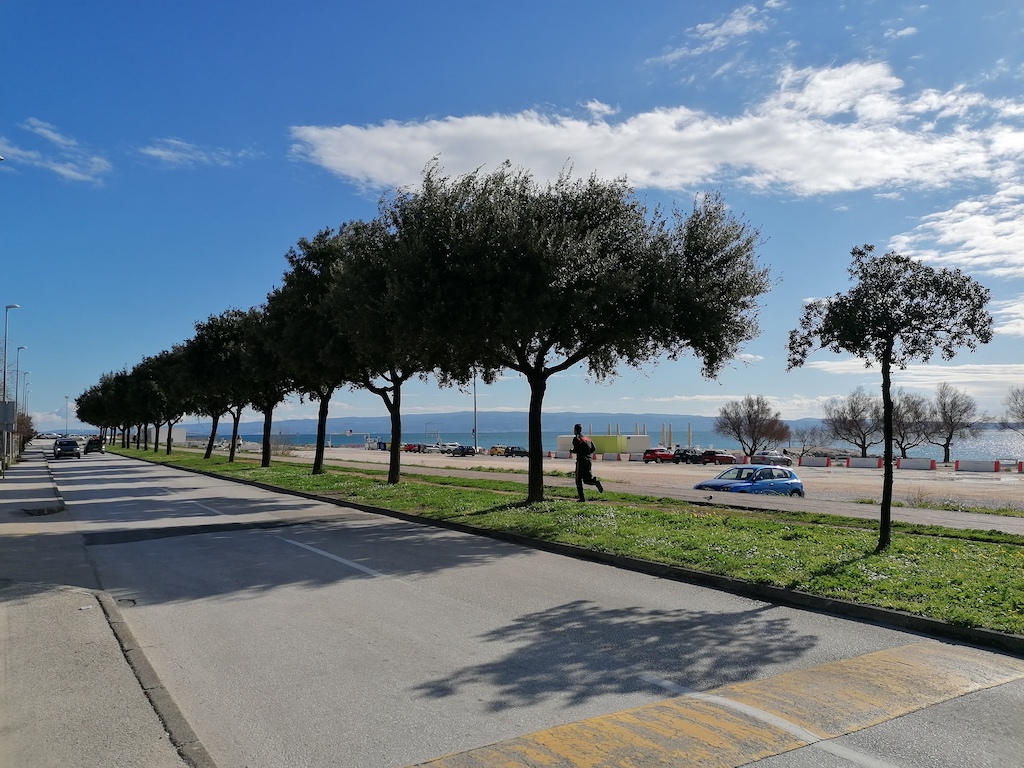
Other times we know from our sisters it was hotter in Moscow than in Split on 15 April or, for instance, on 18 May, i.e. about +31°C in Moscow versus +23°C in Split. But in general, during a Moscow spring, this kind of heat longs several days and in Split, it comes as stable warm weather. If you live here for a long period time, you'll agree that it's warmer here than in Russia!
I've never complained about the summer heat. For sure it's taken easier here between a sea and mountains than in Moscow among skyscrapers. But for people from the northern regions of Russia, summer in Croatia is quite challenging. Dana shares that during summer in Zagreb, she rarely leaves the house before 6 pm, because it is 38°C outside. Fortunately, she works remotely.
Food and supermarkets
Food talk among us hasn't identified anything special as well as problematic. A lack of plenty of dairy products we have in Russia probably contributed to Dana's cultural shock as she'd just moved to Croatia. But as soon as she found that the Croatian item 'svježi sir' (fresh cheese) is quite similar to the cottage cheese we often eat for breakfast in Russia, it isn't a problem anymore. Nellia who adheres to healthy food, was pleasantly surprised that in Split it costs less for her. She also had no difficulties finding components of her nutrition in local shops, like her favorite Russian grain 'grechka' (buckwheat) in the Tommy supermarket down the street, fresh vegetables at the open market, chicken sausages in the Purex shop close to the open market, etc.
We have a contentious relationship with the Croatian open market. From one side, even my first walk along its trading rows was very sobering. I started thinking about seasonal products again, I started favoring local products. When you live in a metropolis for a long time, you completely forget that salad with cucumbers and tomatoes is not really a winter dish. In Moscow, you have everything imported from everywhere year-round. On the other side, I can understand my friends from Zagreb who usually buy vegetables and fruits in the supermarket. If you live far from the open market, it probably won't be a part of your routine. If you have a fixed schedule and work in the mornings, the open market is also not your sort of thing, because it closes early. Nellia and I are indeed fortunate to live in 5 minutes from the open market in Split.

Concerning dishes and recipes, we are not really in Croatian cuisine. All of us work and cook for ourselves so that we prefer easy dishes which can be cooked fast. In fact, we've noticed that we began to cook more Russian dishes here than in Russia, because it just takes less time to cook what you've already cooked a hundred times. However, when we go to eat outside we always favor Balkan/Croatian/Dalmatian cuisine. We stand united in our love of 'burek' in everyday life. When we go to a restaurant or visit our Croatian friends, I've already got my TOP-3 favorite dishes: 1. 'hobotnica ispod peke', 2. 'Dalmatinska pašticada', 3. 'bakalar na crveno'.
Coffee and cafes
A handbook for expats that our host organization sent to Nellia and me before we arrived in Split mentions: "Everywhere in Croatia coffee drinking is a ritual. In Split, it's a way of life. In Split, people drink coffee 5 times a day," said our supervisor as we just arrived. Therefore, the two of us were prepared for coffee drinking. Daria had been living in Serbia for a year before she moved to Croatia, so she also knew about the Balkan way of coffee. For Dana, it showed up unexpectedly. It had an especially strong effect in light of the fact that she doesn't drink coffee at all. In Russia, we usually drink tea, although coffee consumption grows because of globalization.
Dana managed to find a solution. When they go to a cafe with friends, she orders hot chocolate in winter and orange juice in summer and likely tries to sip it slowly. "It sounds like a kind of stereotypical anecdote for my friends in Russia, however, it's true. Once I saw a guy drink coffee for literally 3 hours!" Dana remembers. My observed record was about 2 hours of coffee drinking, but I know for sure that after it, my companion went to drink coffee with his colleague.
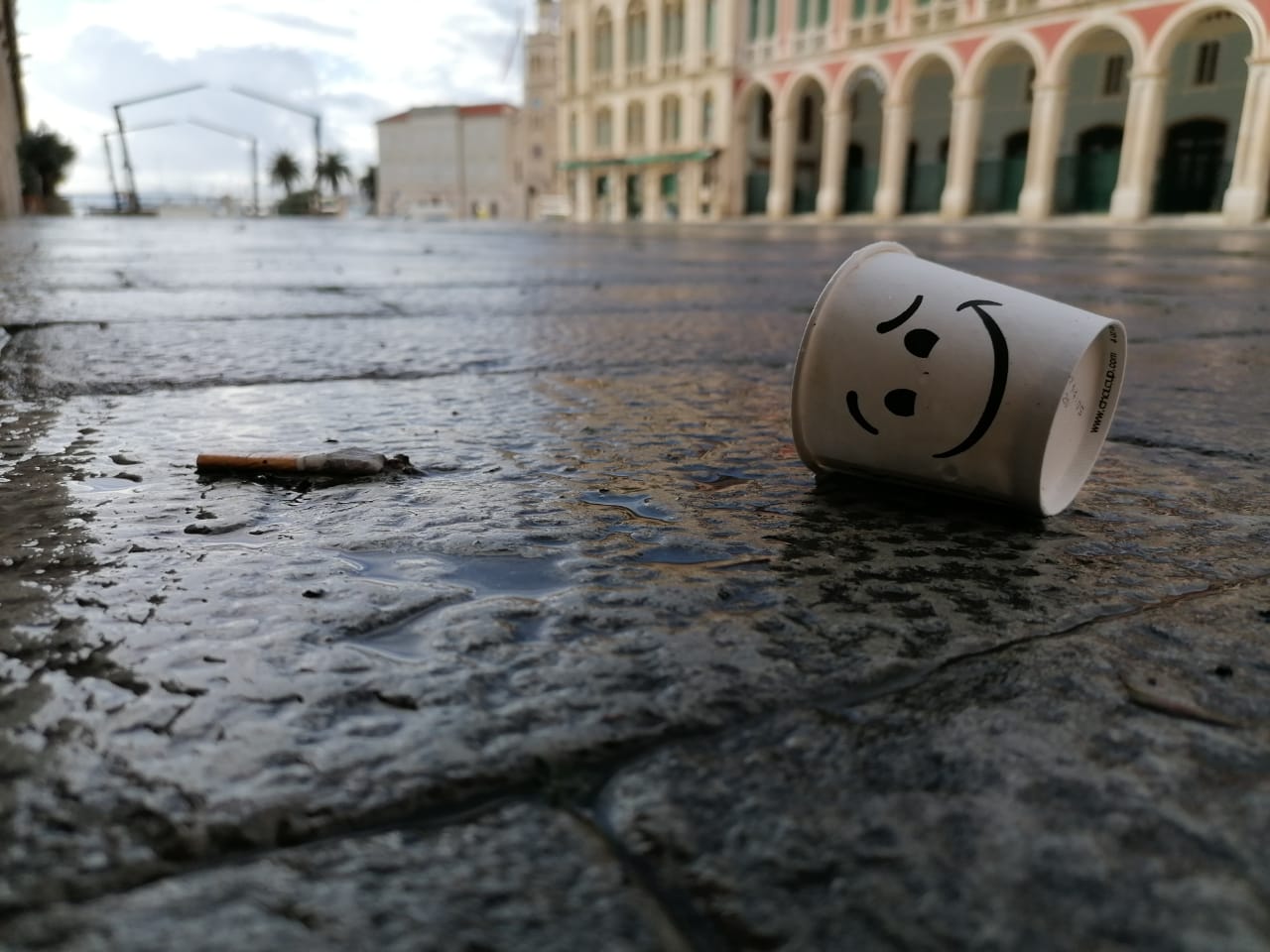
Seriously, we agree that coffee drinking is a charming and useful ritual. Daria shares that she likes to see the cafes full of people, even older people, as she goes to her office in Zagreb at 9.30 am. The remark about the older people is important because, in Russia, we don't usually go to cafes or public places and in a way, they're excluded from a part of social life. In Split, I really enjoyed how coffee rituals survived quarantine. People just took coffee to go and sat on the Riva. Actually, on Monday morning, there were so many people drinking coffee close to the sea as if nobody was working in this city.
Being a bit picky,, we'd say that there are many more trendy cafes in Moscow and Saint-Petersburg. There are cafes with a concept, cozy lights, interior design, a variety of sorts and methods for preparing coffee (machines, Chemex, cezve, etc.), plenty of amazing desserts that are perfectly matched with coffee. We don't lack it a lot, but in our opinion, it'd be a great growth zone. We want dessert!
Housing and household
We avoided a majority of housing problems because our organizations rent apartments and pay housing and communal services for us. For Nellia and me, the biggest discomfort was an absence of central heating during the winter. In Russia, we are used to heating inside the apartment, because the energy is cheap and the communal service works well. I used to wear only lingerie in my apartment in winter. And here in Split, I wore two t-shirts, a sweater or pullover. I slept under three blankets. Meanwhile, I never felt cold outside, because the winter in Split is warmer than in Moscow. The problem was that we lived in an old house, the only source of heating was the air conditioner in the room working 20/24 hours a day. We turned it off for 4 hours only to give it a technical break.
Split is a tourist city and quite often, an apartment owner asks you to leave at the very beginning of the tourist season, because they prefer to rent accommodation to tourists every day than to residents per month. It just brings more income. We were warned in advance, but anyway, moving from one flat to another creates some temporary inconvenience. A matter common for Zagreb and Split is that if you're one or two, it's much easier to find an apartment, than if you're a 4-5-6 group and everybody needs some private space.
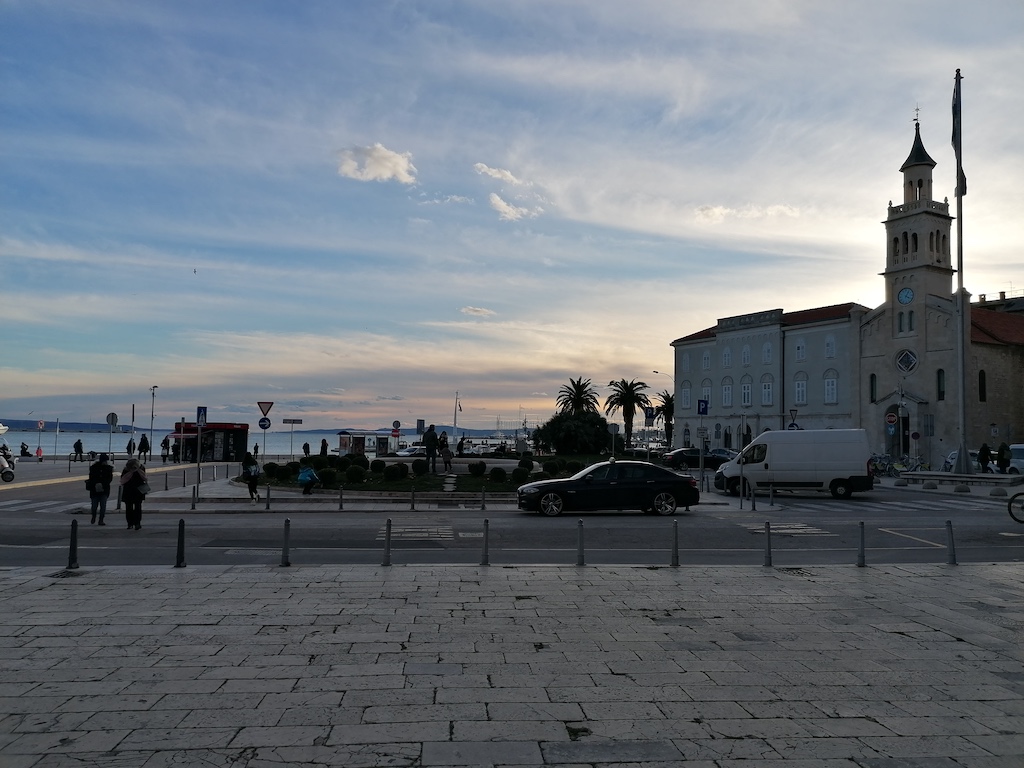
As for the household, we didn't meet any obstacles to find and buy things we needed. One funny story happened to me as I was buying a 'French press'. In my family, we always used this kind of press pot to brew tea. I mean to brew tea for a whole family, whereas for one person it's usually done in a cup. My mom's sent me Russian winter biscuits and a bag of herbal tea. Then I needed French press to brew the herbs and offer them to everybody in my community here. So, I went to the hardware shop nearby, I bought a French press and went back home. Then I realised that it didn't hold a piston in the upper position and went back to the shop to exchange it.
"I would like to exchange it because it doesn't work," I said. "How is it possible that it doesn't work? How does it actually work?" the seller wondered. "What is this thing intended for?" a second seller added to the conversation. "I know how it works, let me try!" a sales consultant shouted from the opposite side of the room and ran to us. For several minutes I've got a feeling that I'm not in southern Europe among the other Slavic nation who looks and speaks quite similar to my nation. I've felt like I'm among the indigenous people of Patagonia with whom I don't have much in common, and I've just re-invented the French press for them, thus they are now surprised and excited at the same time. In the end, all together we checked the boxes with French presses in the shop and looked for a stable piston in the upper position. I came out of the shop with the best working French press!
Services
First and foremost, our pain is mobile service and the Internet. It costs me here double more money (67-75 kn) than in Russia (~30 kn) for 200 minutes and 10 GB a month. While it's cheaper than the average Croatian pays, we have to use a kinda lifehack - we change SIM cards every month. Daria found this way first and then shared information with Nellia and me, otherwise, we'd pay three times more than in Russia. My boss kids with me that I'm a secret service agent every time I send him my new number. Dana adds that it's also annoying to buy 'bonovi' for the mobile account in the stores and pay commission, whilst you can do it online and without commission through your bank's mobile app in Russia.
Two of us had an experience with Croatian Post as we were waiting for our packages from Russia. From the Russian side, we have total trackability, we can watch it in the app of Russian Post. From the Croatian side, there isn't such trackability. Daria's parents forgot to put the number of the house on the package. As a result, Daria spent significant amounts of time trying to get her package from the local post office, sorting center, and Croatian customs. "The matter was, for instance, that once I asked different post officers in the same post office, they gave me contradicting info," Daria explains. It looked like there is no central informational system where every officer can check the info need.
Nellia and I consulted a lot with our local friends, but finally, we couldn't find a good beauty service for an affordable cost. Dana was the one who tried our medical insurance, and it worked nicely in Zagreb: there weren't queues, the doctors spoke fluent English. Daria probably uses delivery services more often than us, so we agree with her that it works and costs almost the same as in Russian cities.
Travelling and entertainment
Our concepts of travelling while you're based in Croatia differentiate a lot. The reason is that Dana had arrived before the Ccovid-19 pandemic began, and the rest of us came between the first and second waves of quarantine. "Well, travelling... I've been to Italy three times, several times to Vienna, once to Slovenia, to Serbia and Montenegro," Dana enumerates quietly as I ask her about travelling. I listened to her with my mouth wide open. From now it's complicated to imagine such freedom of travel without PCR tests and self-isolation. However, it seems according to Dana that in normal times, Zagreb is a good base to be near to these timeless popular travel destinations like Vienna and Venice.
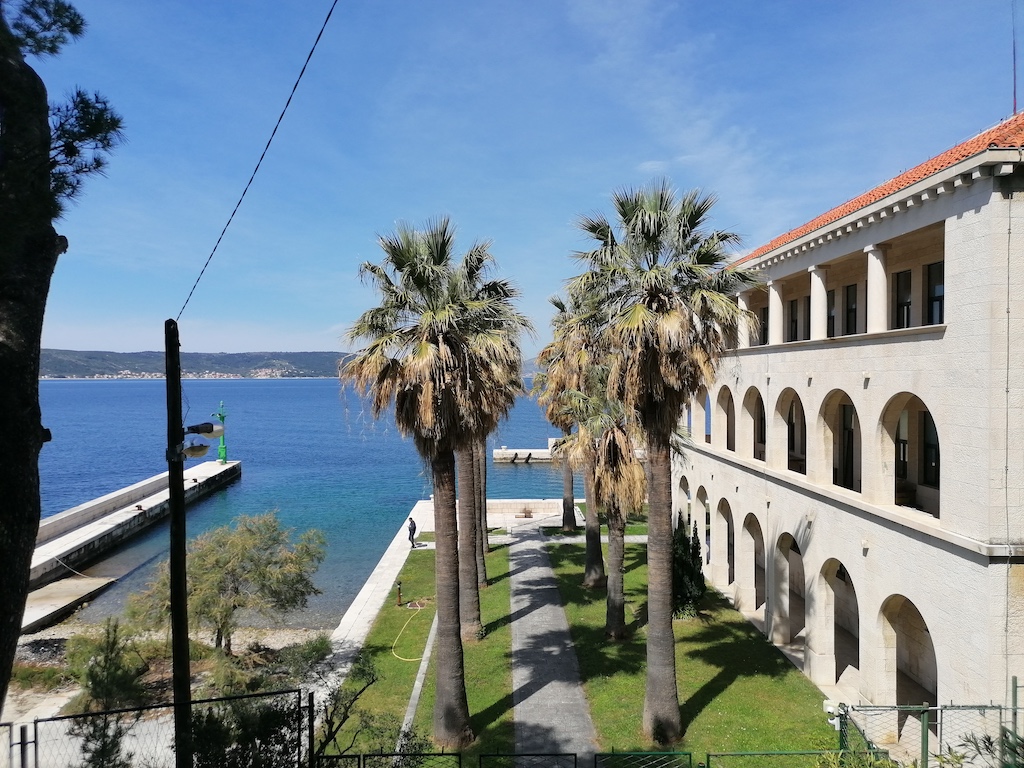
When I arrived in Split at the end of November, it sounded impossible even to go to Bosnia and Hercegovina. Quarantine challenged us, but eventually, we're grateful to it. We've had so many amazing trips around the country, we've seen fantastic views we'd never visit otherwise. I was impressed by the winter trip to Knin and to the source of the Cetina river. Nellia experienced a true authentic Dalmatian dinner and family atmosphere at her friend's house in Omiš. Together we discovered Dalmatian islands, and actually, I don't know what activity could be better. Daria would be a good promoting agent for Sljeme for everybody who asks about interesting destinations in the vicinity of Zagreb. She also could perplex even some locals telling about her hiking on Zeleni vir near Varaždin.
There was more entertainment before Covid as well. Dana managed to go to dancing classes in Zagreb. Although she didn't find classes of her favorite 'jazz funk' style she practiced in Saint-Petersburg, her Croatian friend introduced her to partner dancing and she liked it. To date, I've abandoned dancing, because all the classes were closed. Our experience with movies is quite similar in Zagreb and Split. We prefer old movie theaters - as Tuškanac or Zlatna vrata, which shows timeless classic and independent movies. There is a wide-ranging and international programme there. Tickets are cheaper than in Moscow or the usual cinema situated in some shopping mall here.
Daria warns expats about choosing a movie where the action happens in some highly cross-cultural circumstances as in 'The Mauritanian' she watched recently. The matter is that the original movie is in English, but in some moments characters speak their mother languages like French, etc. And in such moments you cannot understand anything, because all the subtitles are given in Croatian. However, this is not the majority, and movies in Croatia are very friendly to the non-Croatian-speaking public.
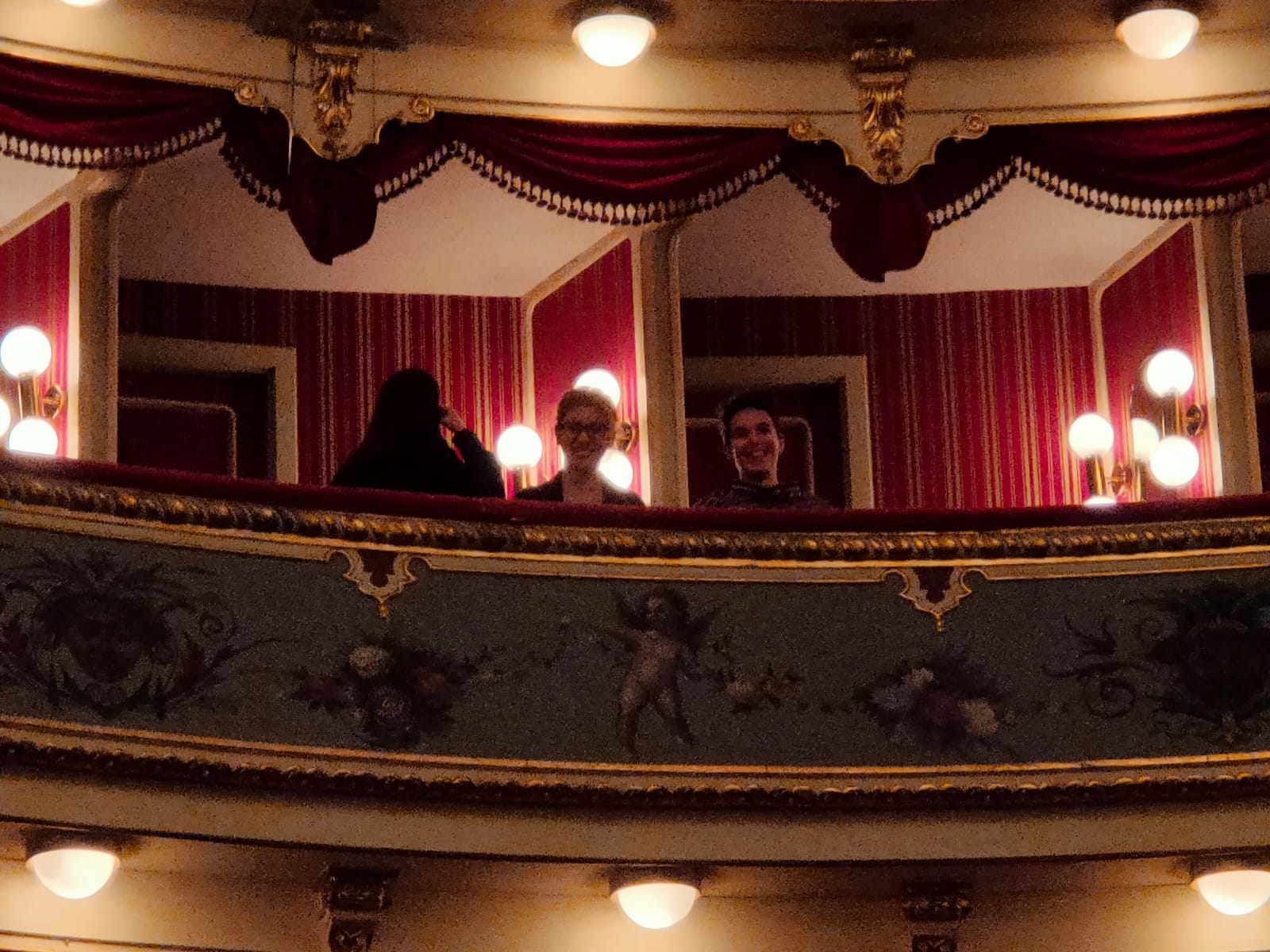
The situation is the opposite in the classic theaters. Shows are mostly in Croatian. Daria speaks Croatian, therefore she goes to a theater in Zagreb at least once a month. Meanwhile, we agree that if you're this Russian 'theater-goer', you'll for sure understand a plot, because our languages and repertoires intersect enough. So that, in this sphere being expat from other Slavic counties is an advantage. Another advantage is having a Croatian friend who will advise in choosing the show, because to manage it by yourself is not so easy.
Our Croatian friend from Split who studies in Zagreb said to us that theater is much better in Zagreb than in Split. Thus, we don't go to the theater in Split. In fact, with Nellia we tried the Swan Lake ballet at HNK (Croatian national theater) in Split. It was... I'm going to put this as delicately as I know-how, not what we expected to see with our Russian-classic-world-famous-ballet background! Here a ballet is a less disciplined and more relaxed art that is closer to modern styles of pop dancing.
Integration in the community
Since we went to Croatia through an EU-programme, our community from the very beginning consists mostly of expats. Of course, we communicate with a lot of Croatians at work. While quarantine measures are still in place, we meet Croatians not only at work, thus, I'd say now our community is mixed. We'd never tried purposely to find Russians here. Thanks to the programme, each of us have one Russian-speaking friend: I have Nellia, Daria and Dana had their friends from Ukraine and Belarus accordingly. Several times we met Russians, just for small talk. The fact is that we don't really need it much. We enjoy our international community. We've met a lot from the intercultural exchange. However, if we'd fancy it, it wouldn't be a problem to find a Russian community. Russian shop 'Ruske delicije' is situated in the center of Zagreb. You can always ask for Russians there. If you're used to social networks, it's even easier - a search on Facebook groups and Instagram hashtags works perfectly.
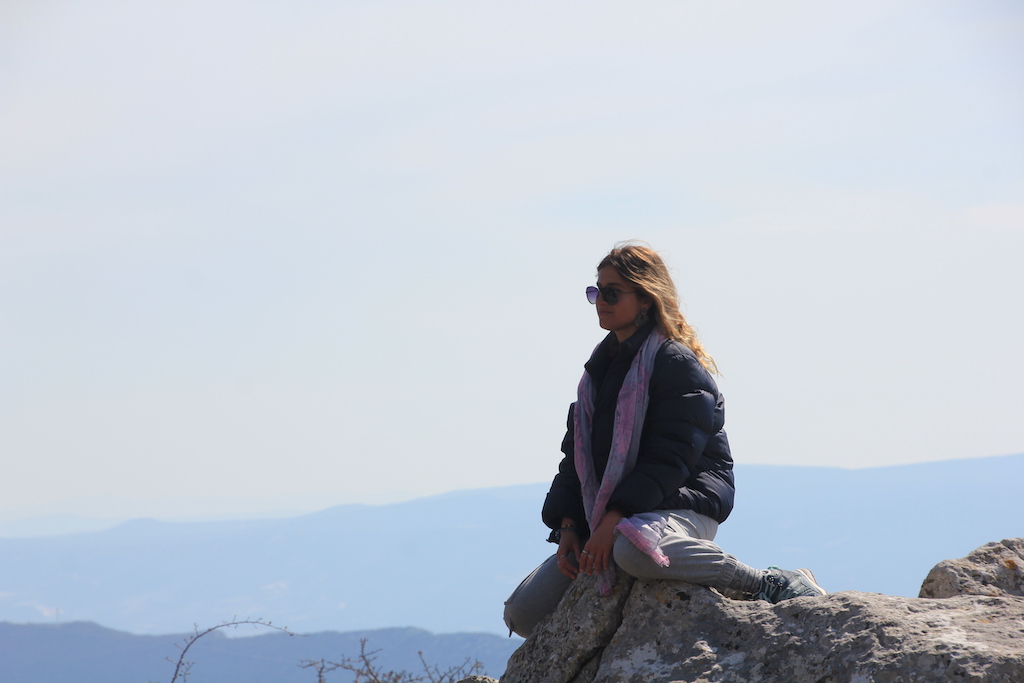
Half of us came here with knowledge of the Croatian language and definitely improved it with everyday practice. Half started to learn on the ground and reached a significant level of comprehension. For sure, it's easier to learn Croatian if you speak some Slavic language. When Nellia doesn't remember any word in Croatian, she just says the Russian word instead of it, and it often helps. However, Nellia and Dana recognise that we're not really motivated to bone up Croatian, as far as almost everybody in Zagreb and Split speaks English. I understand them. Only once I observed a seller who didn't speak English, it was in a sewing store - certainly not popular among tourists and foreigners! Nevertheless, I agree with Daria that if you plan to stay here for a long time, it worth learning some Croatian.
Pomalo
'Pomalo' that is a part of local mentality and a Croatian word for 'take it easy, 'hello', 'how are you, 'i'm fine, 'I'll do it tomorrow' affected our attitude to life. When Dana arrived in Saint-Petersburg after a year in Croatia, she noticed she became more patient seeing lines in the metro or people smoking in the corridors of the metro. Meanwhile, she supposes that Petersburg encourages initiative and entrepreneurship more than Zagreb, the lifestyle there is more dynamic. Nellia and I as well can barely imagine our years of hard studying and hard-working in the atmosphere of 'fjaka' (a Croatian word for siesta that can last infinitely) and 'pomalo'. But whereas we've already passed this hard period of life Moscow, we enjoy every morning in Split.
For more on travel in Croatia, follow TCN's dedicated page.
European Throwing Cup To Take Place in Split On 8-9 May
April 25, 2021 - The European Throwing Cup, which consists of Shot Put, Discus Throw, Hammer Throw, and Javelin Throw, will be held in the biggest Croatian Adriatic city of Split on 8 and 9 May.
The organization of the event, which will bring together 564 athletes from 44 countries, was discussed recently by Tourism and Sports Minister Nikolina Brnjac and the Croatian Athletics Federation president, Ivan Veštić.
Veštić said that the purpose of hosting the competition was to make Split a popular European destination for track and field events.
He informed the minister that the shot put event would be held at the historical Salona venue dating back to ancient Roman times.
To follow the latest sports news in Croatia, follow TCN's dedicated page.
Travel and Leisure Lists Split Among 9 Best European Cities to Retire
April 9, 2021 - The second largest city in Croatia has been highlighted not only for its tourism but also for meeting the expectations of seniors around the world. The esteemed travel portal Travel and Leisure lists Split among the 9 best European cities to retire!
The international travel web portal Travel+Leisure recently published a list of the best places in Europe where people can make their retirement plans come true. Although the cost of living is a factor to take into consideration, the list considered others such as the climate, environment, culture, sights, and the health system quality.
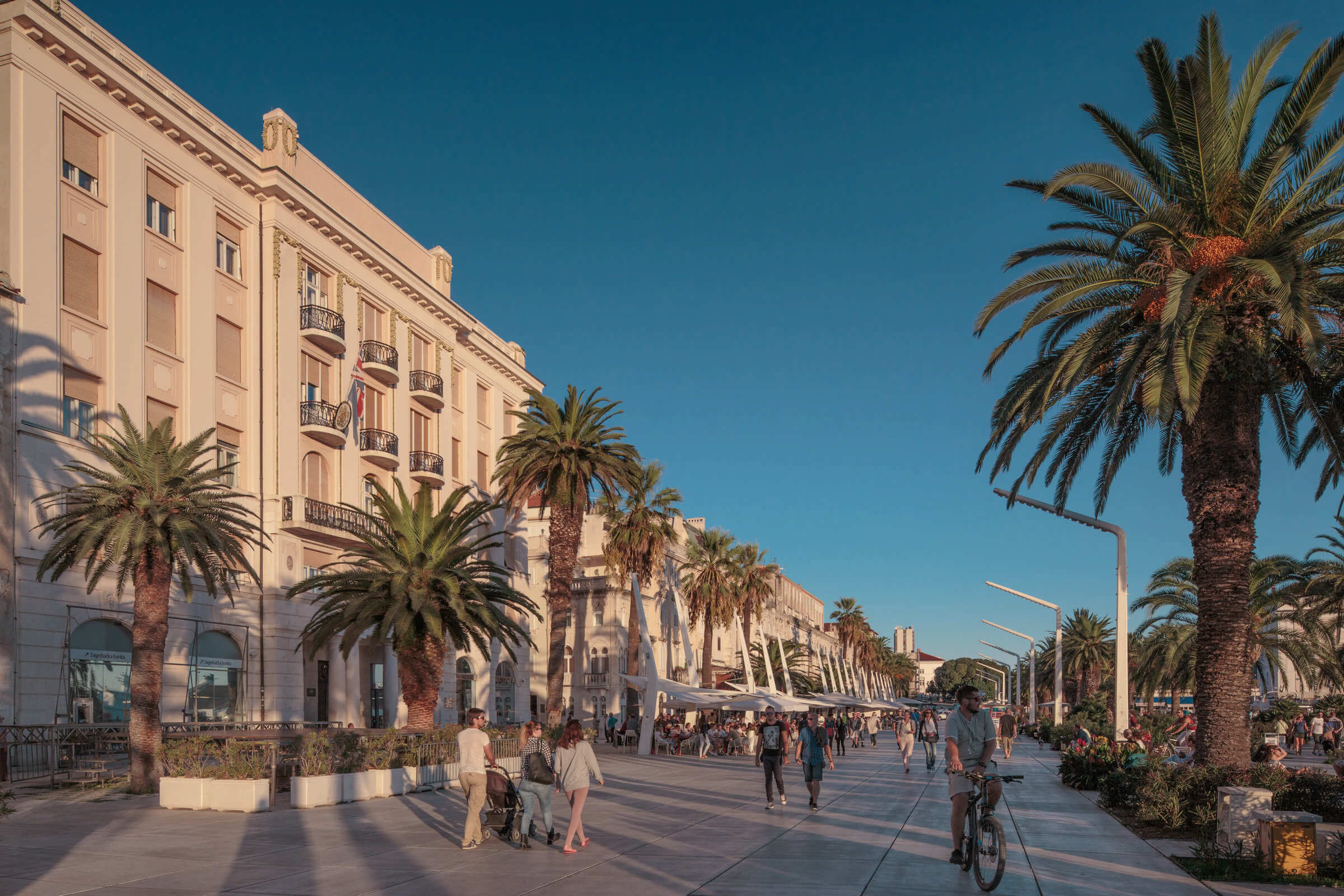
Photo: Romulić and Stojčić
Despite the list recognizing Croatia in general as a tempting destination for retirees, due to its decent climate in both summer and winter along its nearly 6000 kilometers of coastline, the city of Split stood out above the rest.
‘"The Roman emperor Diocletian built his palace in Split, and its remains have been designated as a UNESCO World Heritage site. Restaurants, bars, cultural and entertainment venues, and many English-speaking residents make it relatively easy to adapt," writes Travel+Leisure.
It should come as no surprise then that the Roman Emperor Diocletian decided to spend his last years in retirement in his palace, located in the heart of Split.
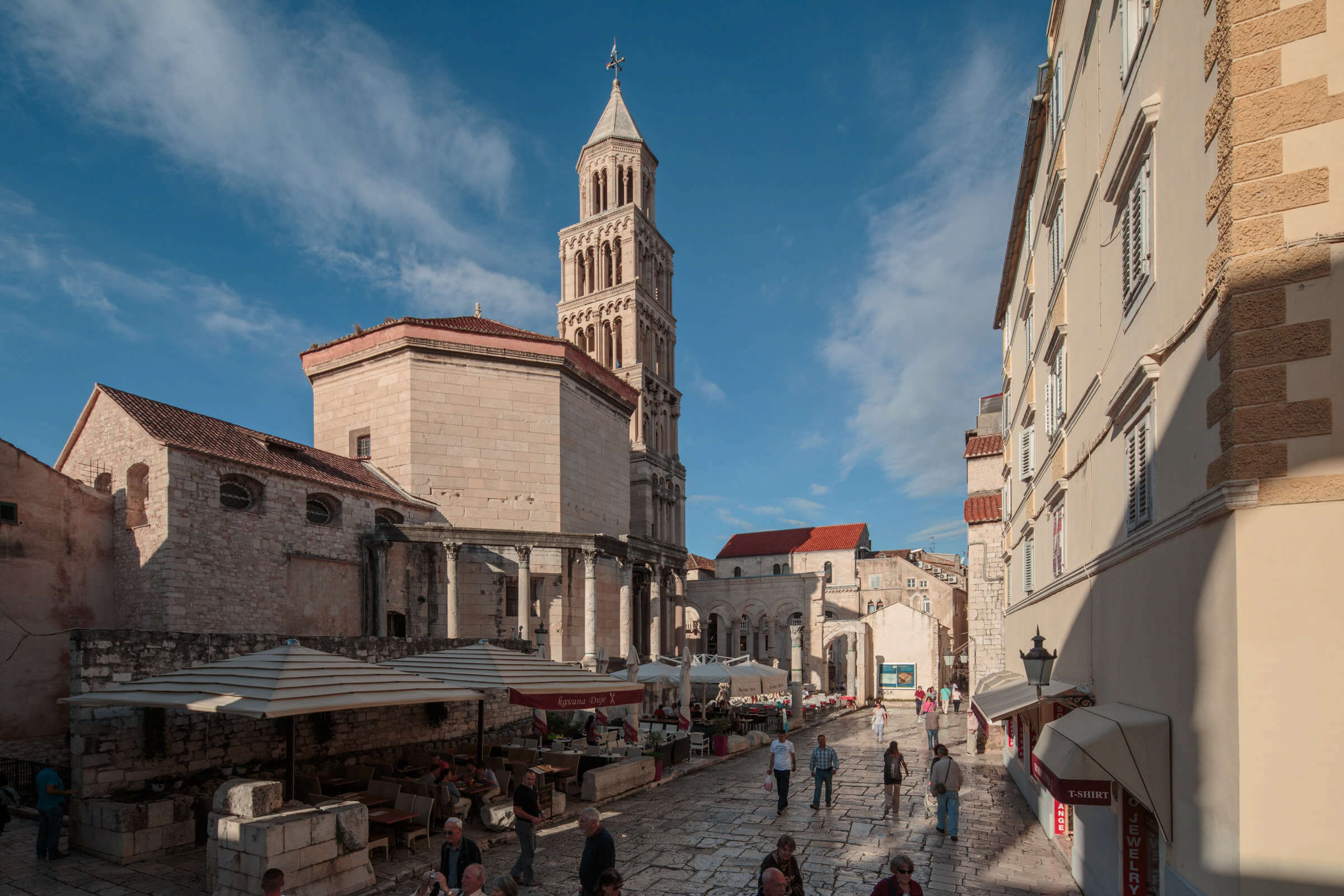
Photo: Romulić and Stojčić
The portal also added that to get permanent residence in Croatia, it is necessary to spend five years in the country as a temporary resident. Likewise, it considers the Croatian health system to be adequate and something positive for those traveling from abroad is the availability of English-speaking doctors. You can find what you need to know about living in Croatia here.
Those interested in fulfilling their retirement plans on the Dalmatian coast can also consider other locations near Split, such as Trogir, Omiš, Makarska, Stobreč, or Podstrana. To learn more about Split, be sure to read our dedicated Total Croatia page.
Split also stands out for its gastronomic offer, its beaches, its museums and history, and the ease of setting sail in the Adriatic either from its ferry ports or by purchasing a boat; something that all interested seniors should definitely keep in mind.
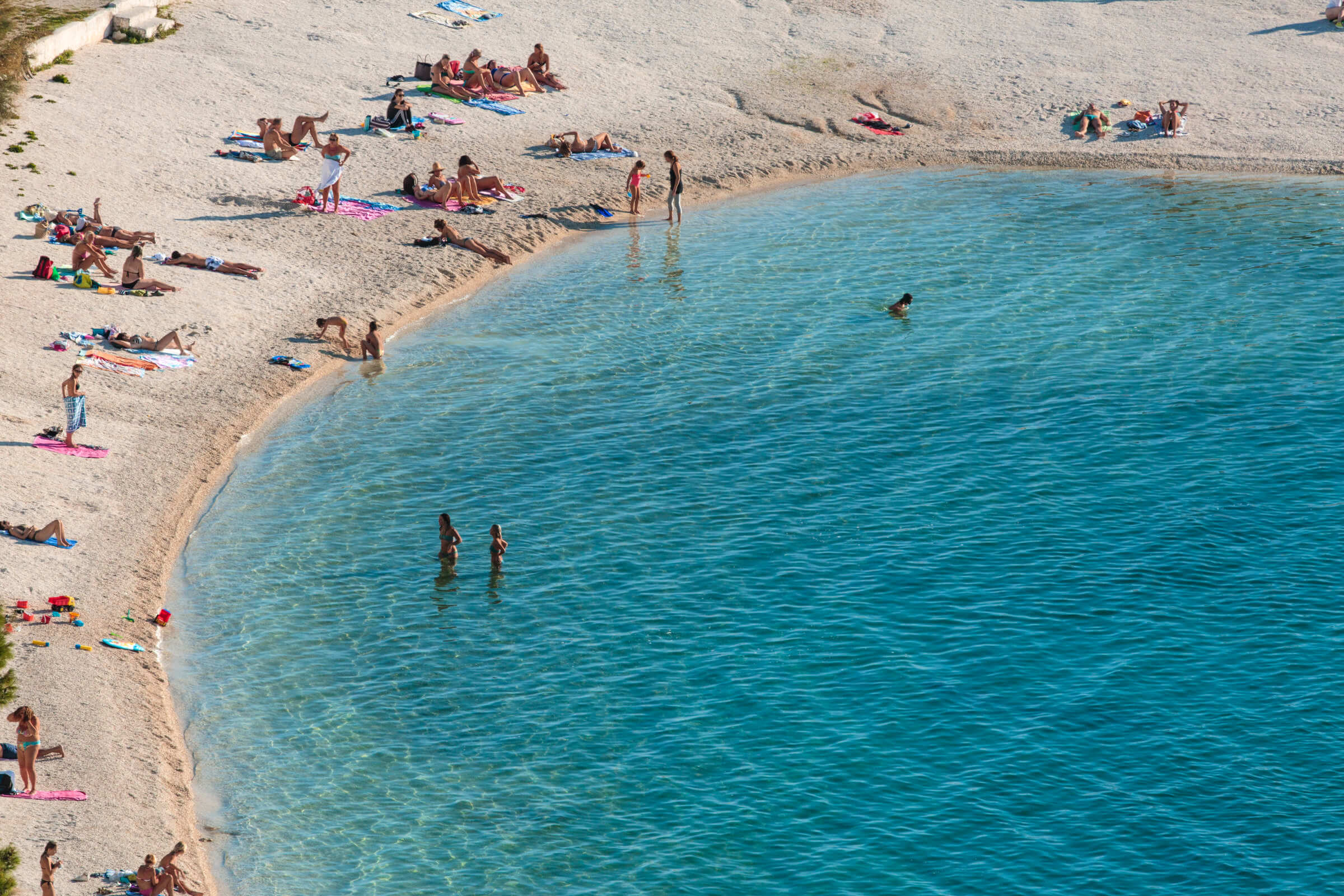
Photo: Romulić and Stojčić
The full list includes the following cities:
- Algarve, Portugal
- Bordeaux, France
- Budapest, Hungary
- Ljubljana, Slovenia
- Split, Croatia
- Alicante, España
- Valletta, Malta
- Kinsale, Ireland
- Prague, Czech Republic
Follow the latest travel updates and COVID-19 news from Croatia HERE.
For more on travel in Croatia, follow TCN's dedicated page.
People Also Ask Google: How Many Days in Split is Enough?
February 23, 2021 - Continuing the TCN series answering the questions posed by Google's People Also Ask function, this time, one that is asked more often than not. How many days in Split is enough?
This is the ultimate question. And if you really wanted my honest opinion, I'd tell you to stay forever (here is why). Because that is not a reality for everyone, I've set out to find a happy medium for travelers making their way to Split, based on various scenarios, like seasons, main attractions, and those balancing the work-travel lifestyle of a digital nomad.
So, how many days in Split is enough?
While I have been visiting Split since 1996, I only really first fell in love with the city during my first full year here, or once I experienced Split outside of the peak summer months. September is now my favorite month in Split, and the magic of Diocletian's Palace during a brisk bura breeze or a warm spring day on Marjan is beyond compare.
But Split has and always will draw hordes of tourists in the summertime, and it's not difficult to see why. Thanks to its glistening coastline, outdoor activities, bustling city center, vibrant nightlife, and booming culinary scene, Split could equal one of Europe's top metropolitan cities if it maintained the summer buzz year-round.
But there is certainly an argument for each season and how many days are adequate given the time of year. Though I believe it all comes down to preference, in the end.
How many days in Split is enough in the preseason?
Ah, the magic of spring! While Croatia's preseason begins earlier each year, it's safe to say that Easter weekend is the official start of the preseason. However, before COVID-19, many airlines launched their summer flight schedules at the end of March, bringing tourists to Split even before the spring holiday. While there may not be as many connections now given the current circumstances (some airlines are pushing traffic back to May), if there is a will, there is a way - and Split in spring is pure bliss.
You'll notice restaurants and bars reopening after winter hibernation, sunny days and temps in the teens (Celsius), and empty alleyways usually swarmed by tourists in the summer. The biggest crowd you'll find is that of sunglass-clad locals gathering on the Riva for their morning coffee, enjoying every moment of spring sun before the summer storm (of tourists).
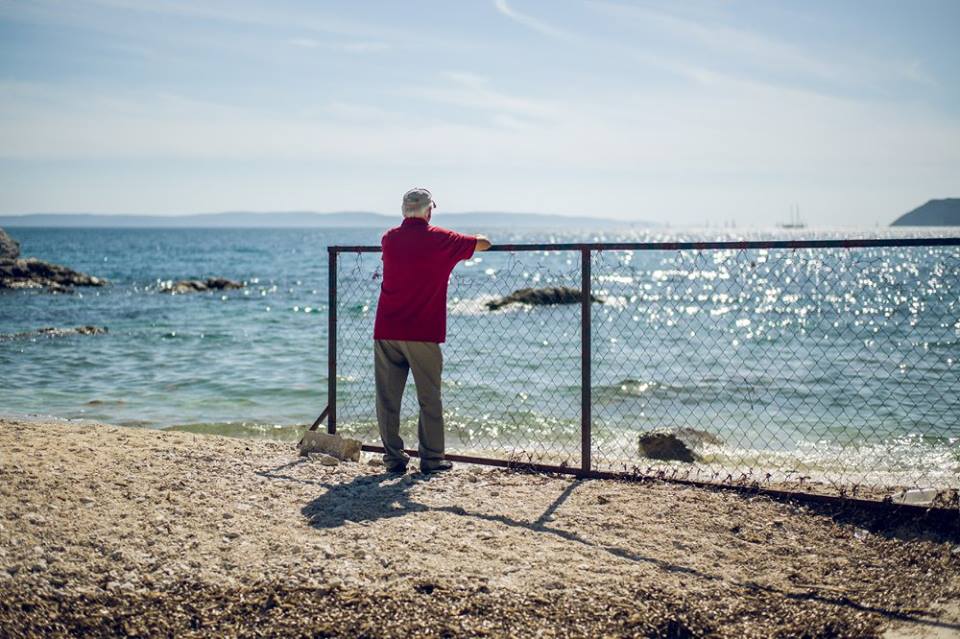
Matthew Christopher Miller
Nature flourishes in the spring. The local green markets are decorated with seasonal charms like wild asparagus and fava beans. Active tourism enthusiasts can hike in the hinterland or enjoy Mosor mountain without the blazing heat.
Spring is also crowned by events, the highlight of which is Split City Day, Sveti Duje, celebrated on May 7 each year. The event gathers thousands of citizens in the center for concerts, boat races, and fairs for days. While we can't say which events will happen this spring, the Croatia Boat Show has been announced for May, bringing the nautical elite, restauranteurs, and tourism reps to Split for five days before the official start of the 'peak' season.
Those of you looking to take day trips to islands will find that Jadrolinija still operates on the winter schedule, resulting in fewer connections (and much of the island closed). Still, those traveling by car can embark on journeys up and down to the coast, and even enjoy cheaper ticket prices at Krka National Park, only an hour away.
Visiting in the spring also comes with friendlier accommodation prices, making it a season with more bang for your buck!
Split in the spring is a sort of re-birth - when the city and its people come alive. While much of the city is just waking up, we suggest you take your time to enjoy the serenity of Split in the spring, and if you stay here long enough, you may even be able to swim.
How many days in Split is enough in the peak season?
Because most people choose to visit Split in the summer, how many days in the peak season is enough?
My honest answer to friends visiting from California is usually no less than five days. Why? Because while Split is a travel hub with access year-round, it is the epicenter of Dalmatia in the summer.
The truth is, those five days are never enough, and the majority of my friends plan to come for a week or more the next time they visit.
But what makes Split so hot (literally) in the summer?
In short, the city is a playground for all types of tourists. Whether you're in your early 20s and want to go bar hopping and nightclubbing until the early morning hours, or rather spend your days at the beach, trying your hand at water sports and rock climbing adventures, or exploring the historic center and its culinary charms, there really is something for everyone here.
And if you grow tired of Split (though highly unlikely)? It's the perfect base for a day trip to the islands, with numerous connections and Brač, Hvar, and Šolta only an hour away. You can hop on the bus or rent a car to visit the UNESCO-protected museum town of Trogir in 30 minutes, or head down the coast for a canyoning adventure in Omiš (but beware of summer traffic). You can tick off Šibenik, Primošten, and Rogoznica on a day trip to Krka National Park and head inland to horseback ride in Sinj (or watch the Sinjska Alka) in under an hour.
Music festivals like Ultra Europe see partygoers stay in Split for a week during the summer, while the Split Summer Festival and Diocletian Days events keep tourists amused with live music and historical entertainment for weeks on end.
The weather is HOT, the sun is shining, the sea is warm, and the air connections aplenty. If you don't mind the crowds or the heat, there is no time limit to Split in the summer. That is if you can afford it.
How many days in Split is enough in the offseason?
Split's shoulder season has become a favorite time for visitors, as September and October offer the perks of summer with usually milder weather and without the peakseason crowds.
The true offseason, however, is usually the quietest time of the year in Split. Some of Split's restaurants go into winter hibernation, as do its people, and empty squares and promenades are a reality in November.
But winter does have its perks, and while locals need some time to rest after a summer of hard work, they come back out to play in December for the festive Advent event. While we didn't get to enjoy it in 2020 due to obvious reasons, Advent usually lasts the entire month of December and into January, where you can ice skate, imbibe on mulled wine and hot gin, and enjoy sausages, live music, and Christmas-themed events.
You’ll also find that many restaurants in Split embrace the colder months with fare destined to warm your bellies, and many restaurants in the city stay true to the classics and traditions of Croatia for the new season to give you a taste of home cooking.
January and February are always the slowest months in Split, and whatever bars and restaurants reopened for Advent may close for 'renovations' until the spring.
But the offseason still offers plenty to do, like visiting its museums (Split City Museum, Meštrović Gallery, and Museum of Illusions are some of the most popular). You can enjoy ballet and musicals at the Croatian National Theater or catch the city's beloved football club Hajduk at Poljud until mid-December before they break until the end of January.
Split is also only a couple of hours away from Kupres in Bosnia & Herzegovina, a hit for Dalmatian skiers in the winter.
Nature never goes anywhere, and you could spend weeks exploring the natural wonders of the region with Split as your base. And if you can brave the winter bura wind, you may want to stay even longer.
How many days in Split is enough to explore Diocletian's Palace?
Now, one of the main draws to Split is Diocletian's Palace - and it's no surprise why. This UNESCO World Heritage Site was once Emporer Diocletian's retirement home, and today it wows world travelers thanks to its beauty and grandeur.
But how many days in Split do you need to explore this 4th-century palace?
It's first important to know that the palace makes up the city center's historic core and is marked by four gates through which you enter - the Golden Gate, Silver Gate, Iron Gate, and Brass Gate. Once you're within the palace walls, you'll notice shops, restaurants, bars, all connected by narrow cobblestone alleyways, which will likely get you lost more often than not.
The palace is also marked by many historical attractions, like the Saint Domnius Cathedral, Peristyle, Vestibule, Temple of Jupiter, and, of course, the famous substructures, or Diocletian's basement.
You could spend all day walking around Diocletian's Palace without really realizing it as local life bustles through, but should you stop to examine the details; you'll want to spend a bit of time here. Some say that a 75-minute walking tour is enough to experience Diocletian's Palace and its 1700-year-old history, which is probably true. But if you were to really embrace the essence of what Diocletian's Palace is for the city today, you'll need at least a few days eating and drinking your way around palace walls, among the locals, to stumble upon all of its charms.
How many days in Split is enough for a digital nomad?
If you're balancing the work-travel lifestyle and are planning on taking advantage of the new digital nomad visa in Croatia, we suggest you make full use and stay a year. Split is a mecca of coffee shops and new coworking spaces. You can enjoy fast internet, good weather, and safe streets. It's also affordable for long-term rentals in comparison to other European cities. Not to mention you'll get to experience everything I've written above - every season, every inch of Diocletian's Palace, and everything that makes Split as special as it is.
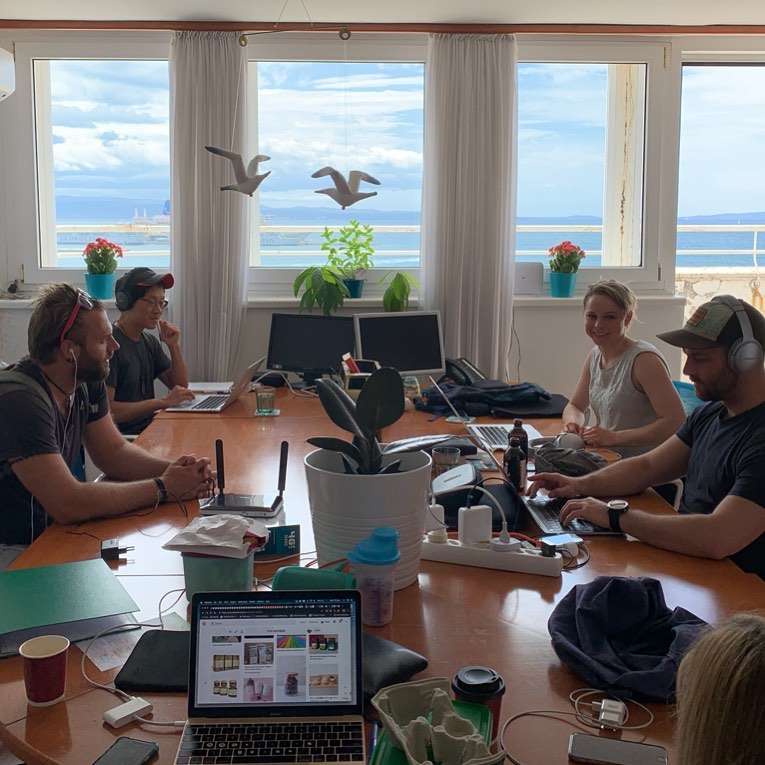
Saltwater Coworking Space
Conclusion: How many days in Split is enough?
All in all, that's entirely up to your time, budget and preference. Truly, there is no number of days too large. I am going on six years here and Split still finds ways to surprise me. You will certainly feel the magic of Split during an afternoon coffee or a night around town, but to truly embrace the essence of the city, do yourself a favor and stay a little longer.
To follow the People Also Ask Google about Croatia series, click here.
Small Renters in Split Especially Hit by COVID-19, Turning to Long-Term Tenants and Students Instead
January 10, 2021 - Small renters in Split are especially struggling from the effects of COVID-19, and many are deregistering their accommodations as tourist facilities.
It's no surprise that 2020 was uneventful when it comes to the number of tourists, resulting in an increased number of deregistered private accommodations, reports Slobodna Dalmacija.
Namely, many private accommodation owners have recorded fewer or no guests due to the coronavirus pandemic. Some are deregistering as tourist accommodation, while others are trying to get tenants for a limited period of stay in the facility, no later than June 1.
"In 2020, in the area of Split-Dalmatia County, 3266 citizens requested to cancel the provision of catering services in the household," says Stjepanka Marčić, head of the Department of Tourism in Split-Dalmatia County, which currently has 26,523 active landlords. Their total number decreased by 11 percent compared to the period before the pandemic.
The highest number of deregistrations was recorded in Split, where 1,200 landlords requested deregistration, i.e., 15 percent of the total number of registered. The least are on the islands of Hvar and Vis, five percent of them," said Stjepanka Marčić.
Citizens submitted requests to deregister throughout the year, most intensively during December 2020.
The most common reason for deregistering is that in 2020, they did not have a single guest, while at the same time, they had to pay taxes, tourist tax, and tourist membership fees. Many decided that it is not worth bearing the cost with no income.
This is confirmed by one landlord, who decided to deregister his apartment in the wider center of Split last fall.
"I paid half the sojourn tax, half was waived. And a membership fee to the Tourist Board, and two lump sum installments, and not a single guest. Not a guest, not even an inquiry. If I hadn't deregistered the apartment in October, I would have paid the last installment of the lump sum. It doesn't make sense," said the Split landlord. At the moment, he is not even thinking about whether to reactivate his apartment for tourist purposes.
"Who knows what will happen in a month? Who can be smart here? They will say that a new strain of corona has come again, and everything will close everything again. Vaccines and masks, and who has been vaccinated twice or thrice.
Of course, in June everything will reopen due to the tourist season and nothing will matter anymore nor will they control who enters the country. And then the locals will shut us down again in October," he added.
The Split-Dalmatia County Tourism Department is reluctant to predict whether and to what extent they will see renters return.
"Citizens who have deregistered will follow the development of the market situation and, accordingly, will decide how to proceed. Some real estate owners in the city of Split have already decided on long-term rentals or renting to students, while others, depending on the situation in the countries of major markets, the interest of foreign and domestic guests, epidemiological rules, flight schedule and calming the pandemic, will consider reactivating their capacities," says Stjepanka Marčić.
Anyone who has deregistered their private accommodation from the Register of Landlords will have to submit a new request, accompanied by the legally prescribed evidence if they change their minds and want to re-host tourists. In the conducted procedure, an inspection will be carried out and a new decision will be made to provide catering services in the household.
By amending the Law on Catering Activity, the deadline for obtaining a permanent solution instead of a temporary one has been extended by one year. Renters who have a temporary solution with a deadline of 31 December 2020 may continue to provide services until 31 December 2021 on the basis of that solution and have no obligation to obtain a new one.
The same deadline applies to caterers who have obtained an interim decision on determining the minimum conditions or an interim decision on the categorization of catering facilities with a deadline of 31 December 2020. They can continue to perform catering activities until 31 December 2021 without obtaining a new decision.
Last year's weak tourist season forced many Dubrovnik renters to turn to long-term rentals, too.
Due to new tax solutions passed in the record 2019, according to which the maximum city taxes per tourist bed and also the maximum high tourist tax for 2021 in Dubrovnik were calculated, many renters canceled the categorization of their apartments.
According to the data of the State Administration Office of the Department of Tourism, as of December 15, 8,397 landlords were registered in Dubrovnik-Neretva County, while last year there were 8,725.
By mid-December, there were 328 fewer private renters or 2,071 fewer beds than last year. Of that, there is a reduction of 141 landlords or 843 beds in the city of Dubrovnik.
Last year, private accommodation in Zadar was 7.34 percent full. This data best illustrates how much the epidemic had an impact on the occupancy of private apartments.
Although the Zadar Tourist Board registered 31 percent occupancy in July and 38 percent in August, it could not save the season. This also had an impact on the interest of renters, whose number is declining.
According to the current data in the eVisitor system, compared to the same period last year, there is four percent less capacity in basic beds and seven percent fewer renters in Zadar.
However, the city's Tourist Board points out that canceling the decision on temporary approval for the provision of catering services in the household is carried out by the Administrative Department for entrusted affairs of the Zadar County State Administration, so the exact number of deregistered capacities will be known in January.
Finally, the number of deregistered accommodations in Šibenik-Knin County in 2020 is 9 percent, and in the city of Šibenik, it has risen to as much as 14 percent, which puts it alongside Split.
"Before the pandemic, there were 8670 landlords in the county, and today there are 7889 of them," said the authorities in the Šibenik-Knin County Department of Tourism. Most deregistered accommodations were recorded in the city of Šibenik, suburbs, and towns, especially in September.
"The most common explanations were uncertainty due to the situation caused by the COVID-19 pandemic. The problem is the payment of obligations, and the landlords do not have announcements of reservations and guests," said Šibenik-Knin County.
A large number of renters who have deregisterd accommodation have announced that they will report them again when the pandemic calms down.
To read more about lifestyle in Croatia, follow TCN's dedicated page.
PHOTOS: Extraordinary Plants of Klis Fortress Show Two Sides of Dalmatia
January 2, 2021 – High on the mountains, overlooking the city of Split, the historic settlement of Klis stands on the border between two distinct climate regions – the Mediterranean and the Dalmatian hinterland. The sometimes rare and extraordinary plants of Klis Fortress are characteristic of both. A new book details the flora you can find on both sides of the Dinaric Alps
The views from Klis are spectacular. The great city of Split lies below you, perched on the edge of the glistening Adriatic, beyond it, the islands of Čiovo, Šolta, Brac, Vis and Hvar. It's a view that has been admired for over 2000 years.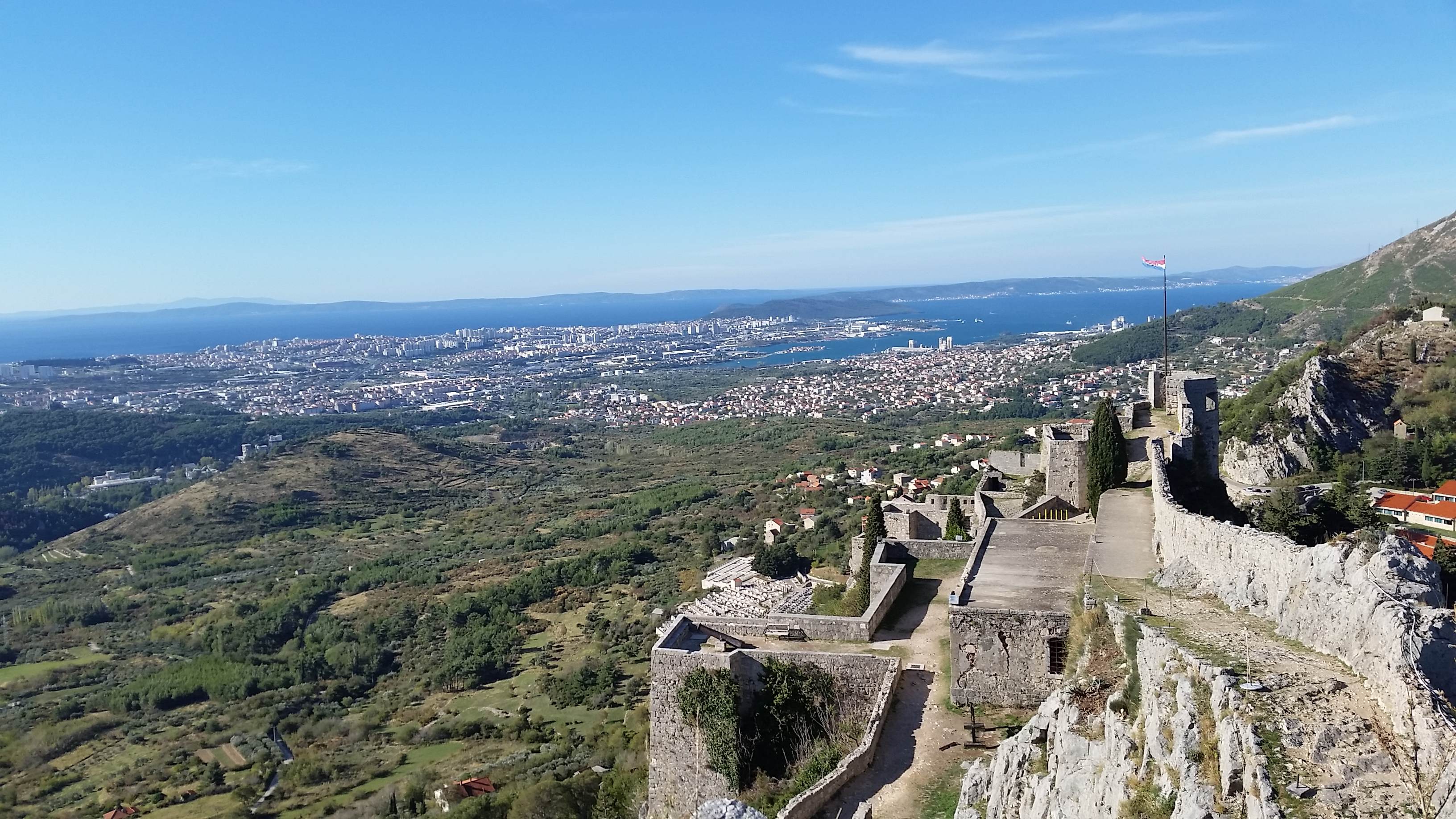 The view from Klis Fortress
The view from Klis Fortress
That's how long a fortress has stood here. Restructured and rebuilt several times over the millennia, within the walls of the impressive Klis Fortress lie much of the recent history of these lands – of the Illyrians and the Romans, the arrival of both Slavic people and of Christianity, the defence of Christian Europe from the Ottomans. So steeped in history are these walls, little wonder the fortress was chosen as a filming location for the popular Game Of Thrones series.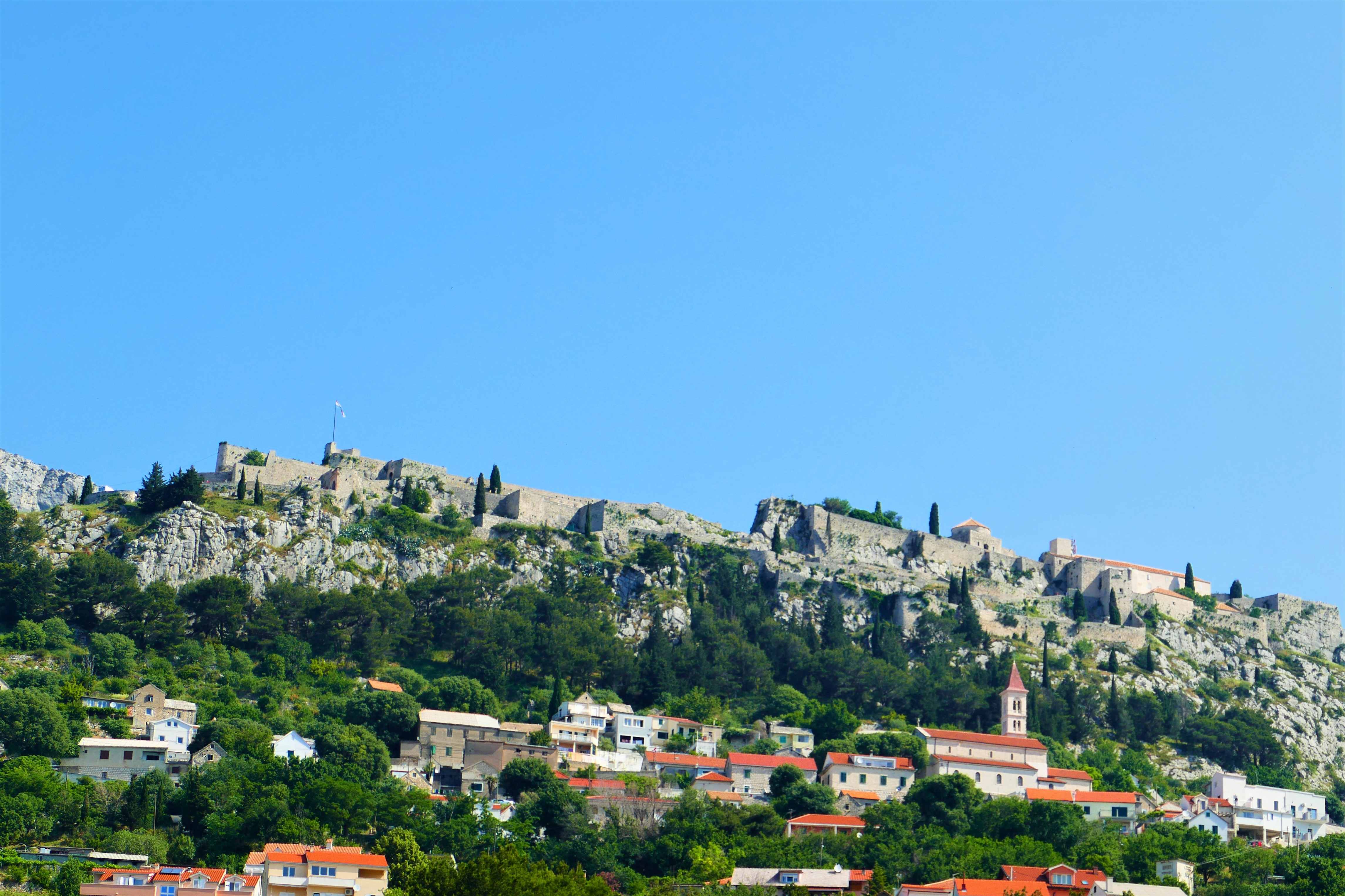 Klis Fortress
Klis Fortress
With its view so irresistibly inviting the eye, you could be forgiven for missing the plants of Klis Fortress. That's unfortunate. The fort straddles the top of the Dinaric Alps – one half existing within the sub-Mediterranean climate of the Dalmatian hinterland, the other on the distinctly warmer side of the Adriatic. This creates a unique environment for a wealth of flora. Not used as a fortress since the threat of Ottoman invasion subsided, these days the structure usually welcomes only tourists. The plants of Klis Fortress have reached into the grounds of the buildings, indeed into its very walls.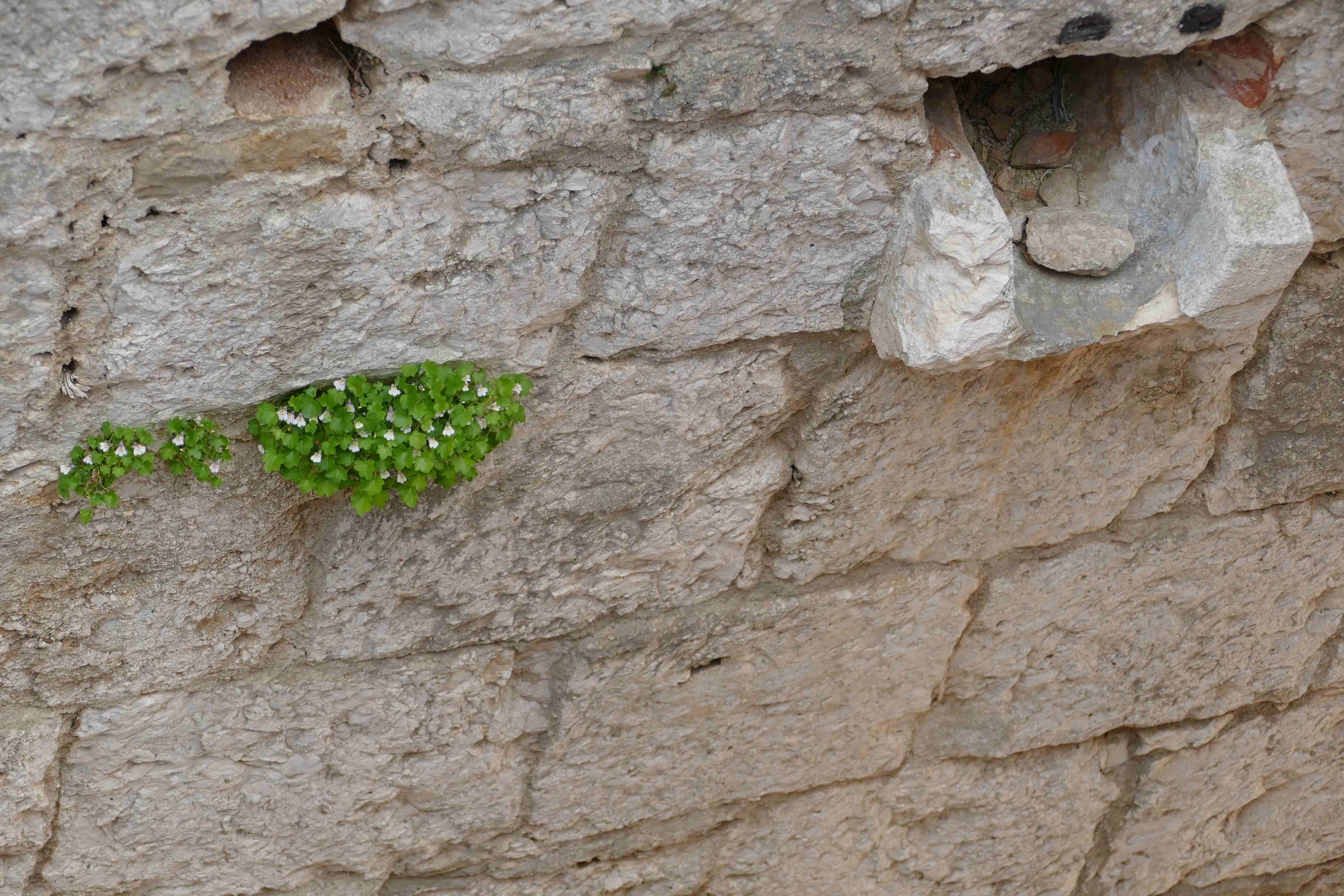 Cymbalaria muralis - Ivy Leaved Toadflax within the walls of Klis Fortress
Cymbalaria muralis - Ivy Leaved Toadflax within the walls of Klis Fortress
One person for who the plants of Klis Fortress did not go unnoticed is Ivan Limić. He lived in Klis all of his life, before leaving to get his degree, then a masters, at the Forestry department of the University of Zagreb. Today, he works for the Institute for Adriatic Crops and Karst Reclamation (IAC) on a PhD student's position. Having a specific interest in botany, he knows the plants of Klis Fortress better than most and after he met botanist Vedran Šegota of Herbarium Croaticum while in Zagreb, they decided they should work on a project together. After several years of work, that project - a book, 'Biljke Tvrdave Klis (Plants of Klis Fortress)' – has finally been released. Although helmed by co-authors Vedran and Ivan, it has actually been a project that involved a much greater group of contributors, not least the community of Klis and some of the best botanists in Croatia.
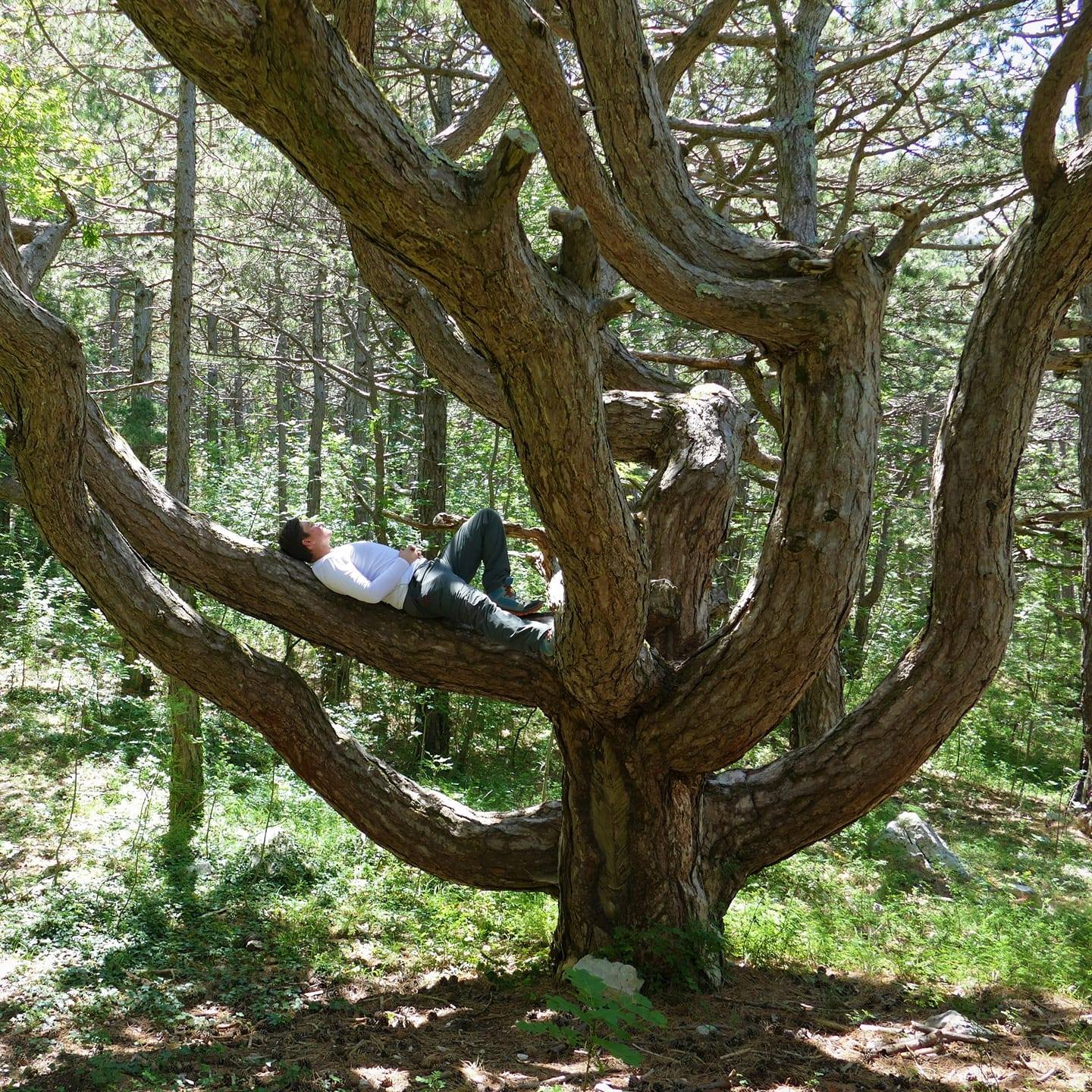
Ivan Limić, co-author of 'Plants of Klis Fortress', relaxing in a Black Pine
TCN talked with Ivan Limić to find out more about the book and about the plants of Klis Fortress
I first met Vedran when I started volunteering at Herbarium Croaticum Zagreb. I was in the city doing my degree. My main interests are forest silviculture and soil erosion, karst melioration, assessment of atmospheric deposition, study of flora, plant determination in Mediterranean region forest ecosystems and the effects of forest fires in those areas. We talked about doing a joint project because we shared similar interests. Vedran came to visit me in Klis and I wanted to show him around the fortress, but looking specifically at the flora. That's when we decided we should do a book about the plants of Klis Fortress.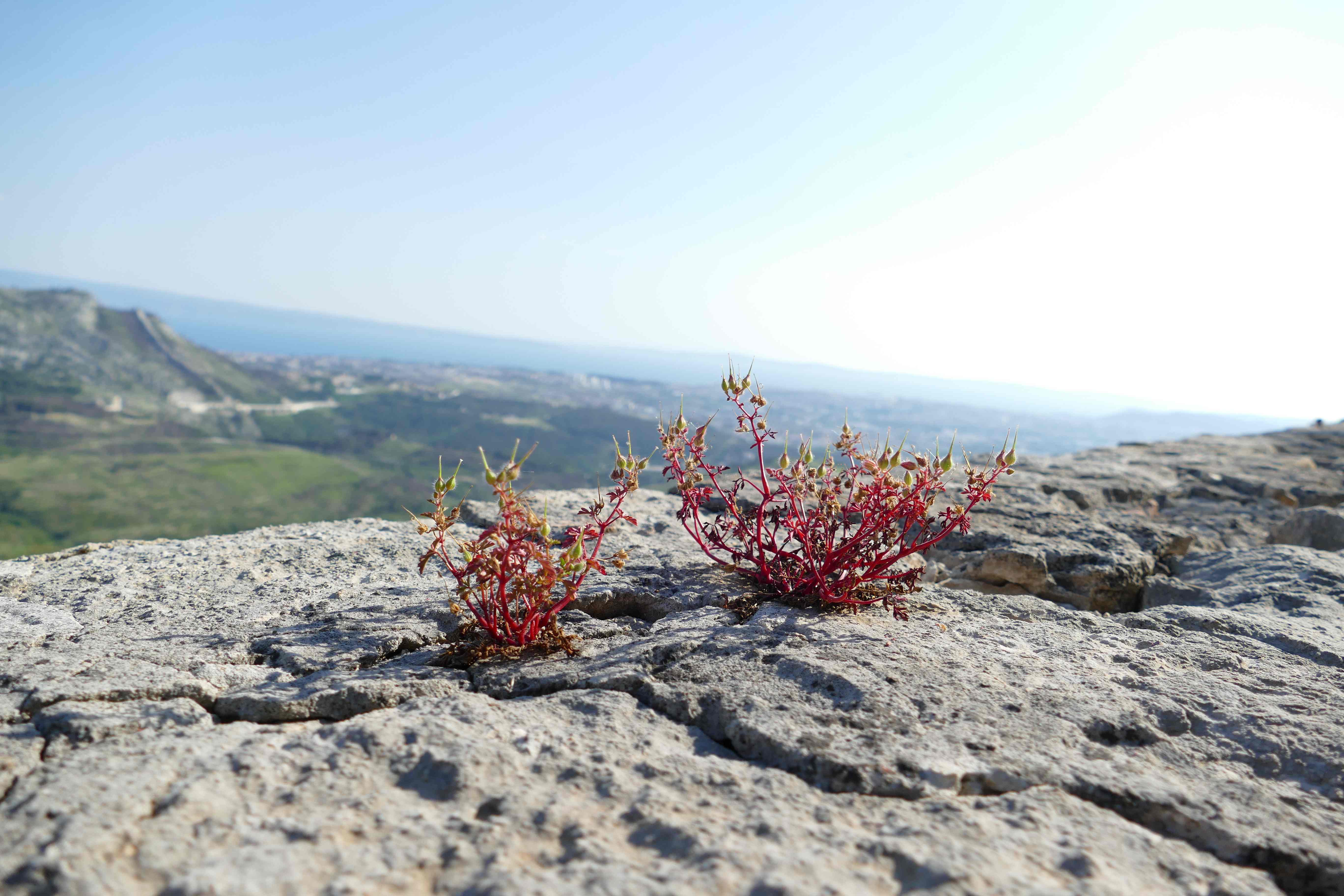 Geranium purpureum, the little-robin
Geranium purpureum, the little-robin
I walked around Klis Fortress all my life. When you live in a place, you not only acquire so much information about that place over the years, you also have an emotional connection to it. That's not something you can read in every book. Hopefully, with our book, we managed to get a sense of that emotional attachment across, so that you can really feel the place.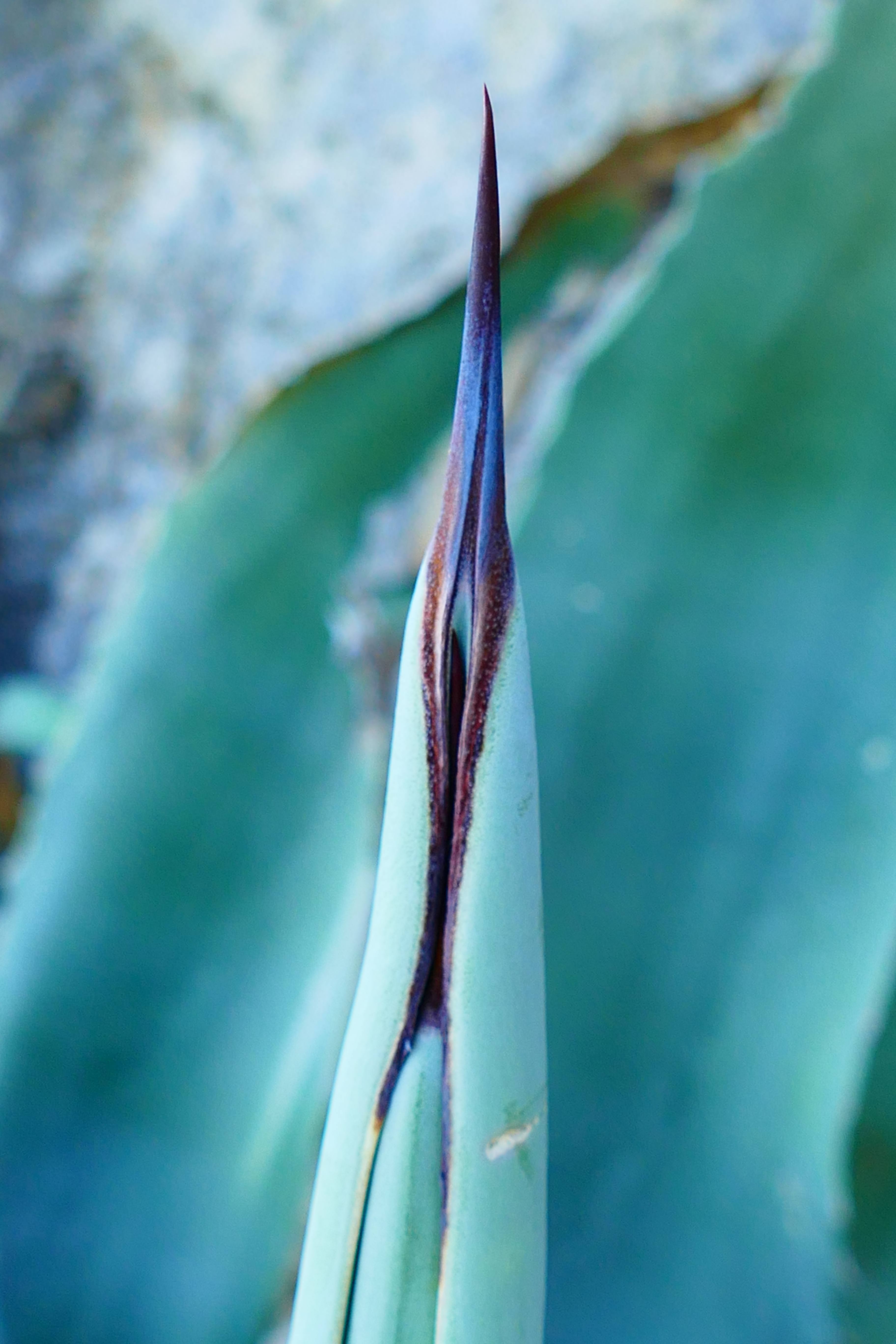 Agave americana
Agave americana
In a way, the special thing about the plants of Klis Fortress is that they are not so special at all – they are extremely characteristic. But, they are characteristic of two completely different climate regions.
On the south side of Klis Fortress, it is very warm and sunny – the Mediterranean climate. You can find species like Aleppo pine. On the northern side of Klis Fortress, it is colder – the sub-Mediterranean climate. Here, you can even get snow in winter and the most common species is Black pine. Two completely different climate regions in just a 50 metre stretch diagonally along the ground. That's what makes it extraordinary.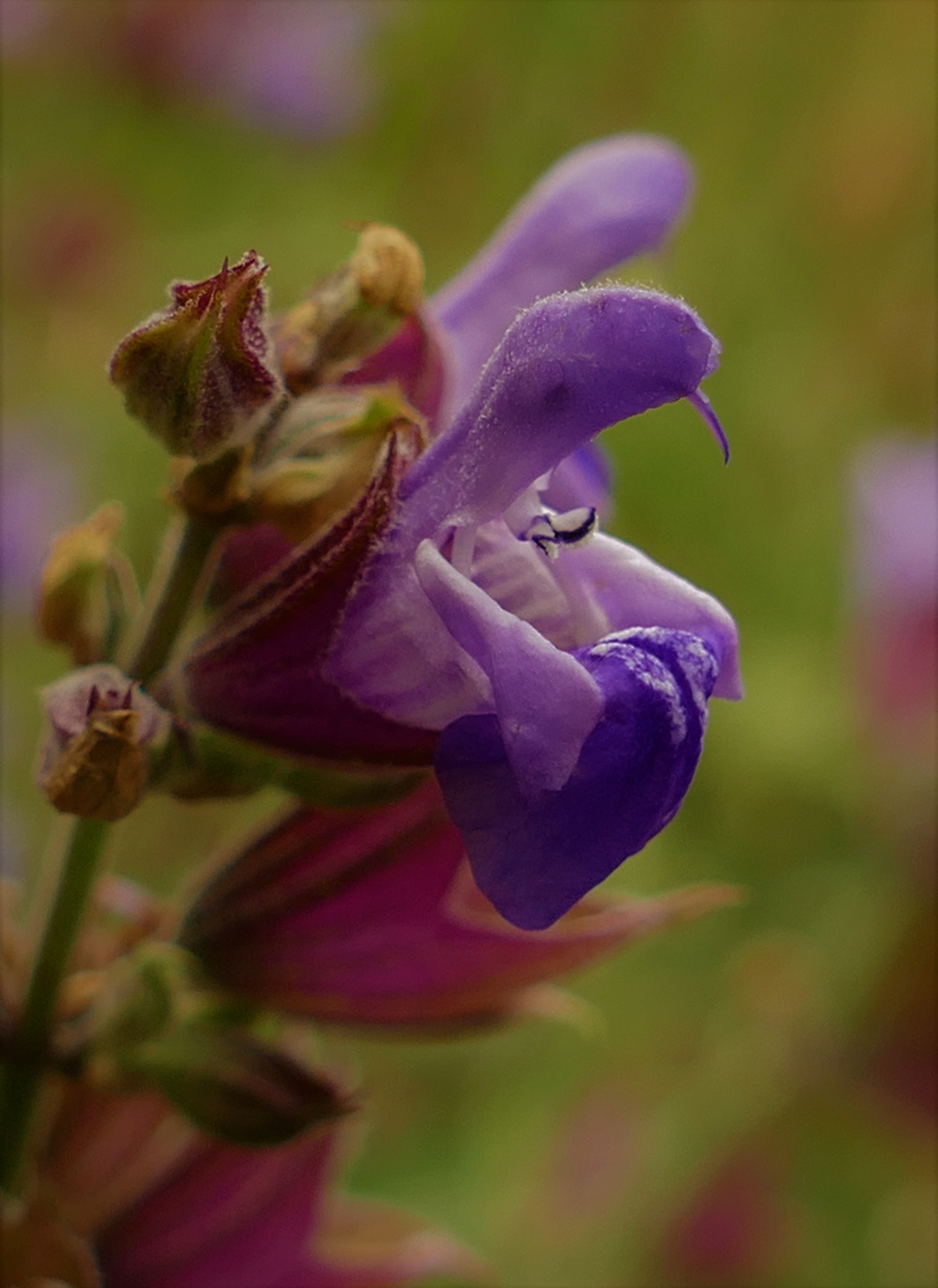 Salvia officinalis (sage)
Salvia officinalis (sage)
The plants of Klis Fortress include more than 300 species. We have around 100 of them listed in the book. Of those, 16 are species endemic to this area. Some of those are extremely rare - you can find them in very few places in Croatia - such as Fibigia triquetra. That plant is actually one of the reasons why this book exists. When I was a child, people used to tell me that some of the plants of Klis Fortress were very unusual and very rare. I used to walk around the fortress, looking at all the plants, trying to guess which ones were the unusual and rare species.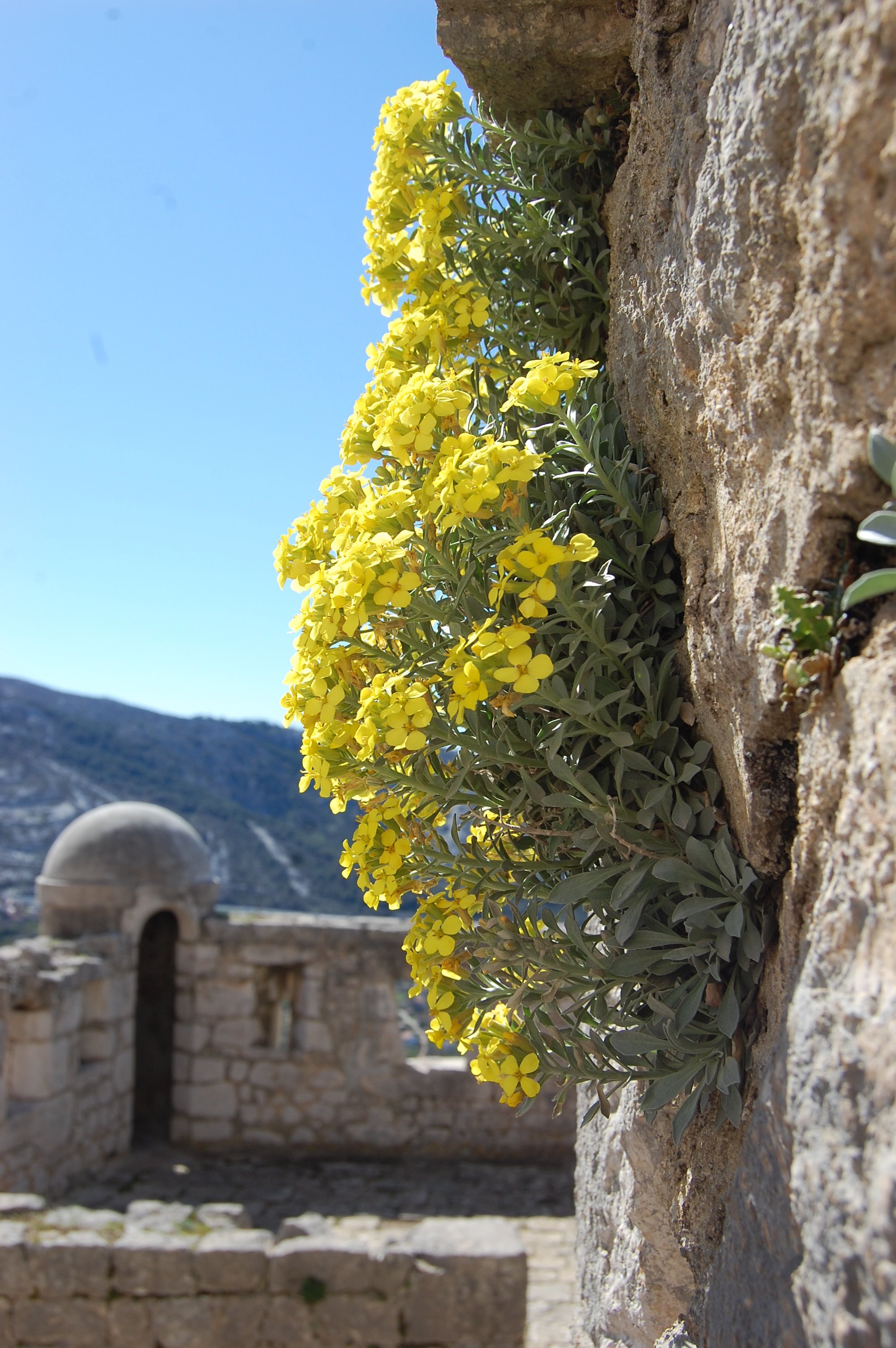 Fibigia triquetra
Fibigia triquetra
The man who first identified this as a unique, endemic species actually discovered his first specimen inside Klis Fortress. All of the studies and writings he made about the plant were done here. That plant is now the symbol of Klis Fortress. Polypodium cambricum
Polypodium cambricum
You can find our book in Klis library. Anyone can borrow it. It's also available at the entrance to Klis Fortress, where you buy the tickets. We wanted to give the opportunity to anyone who comes here to learn about the plants of this region – that's why we made such an effort to have the book in five languages. It was designed as a guide to the plant species of the whole Mediterranean mountain region in Croatia, so it's not just for the plants of Klis Fortress or the people who come to Klis Fortress itself.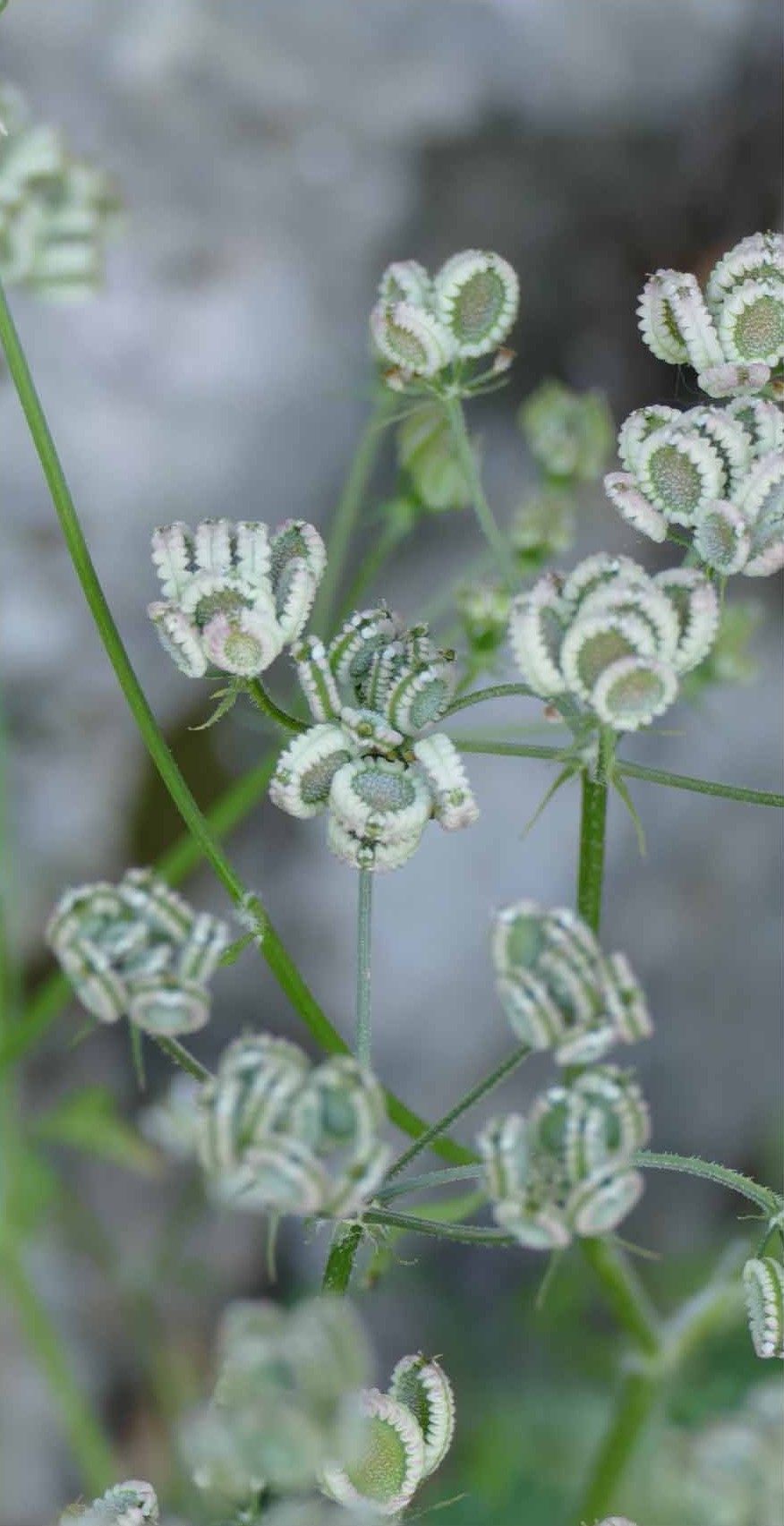 Tordylium
Tordylium
Most of the photography in the book was done by ourselves. It was important to take the photographs across four different seasons. That's one of the reasons it took almost two years to write this book.
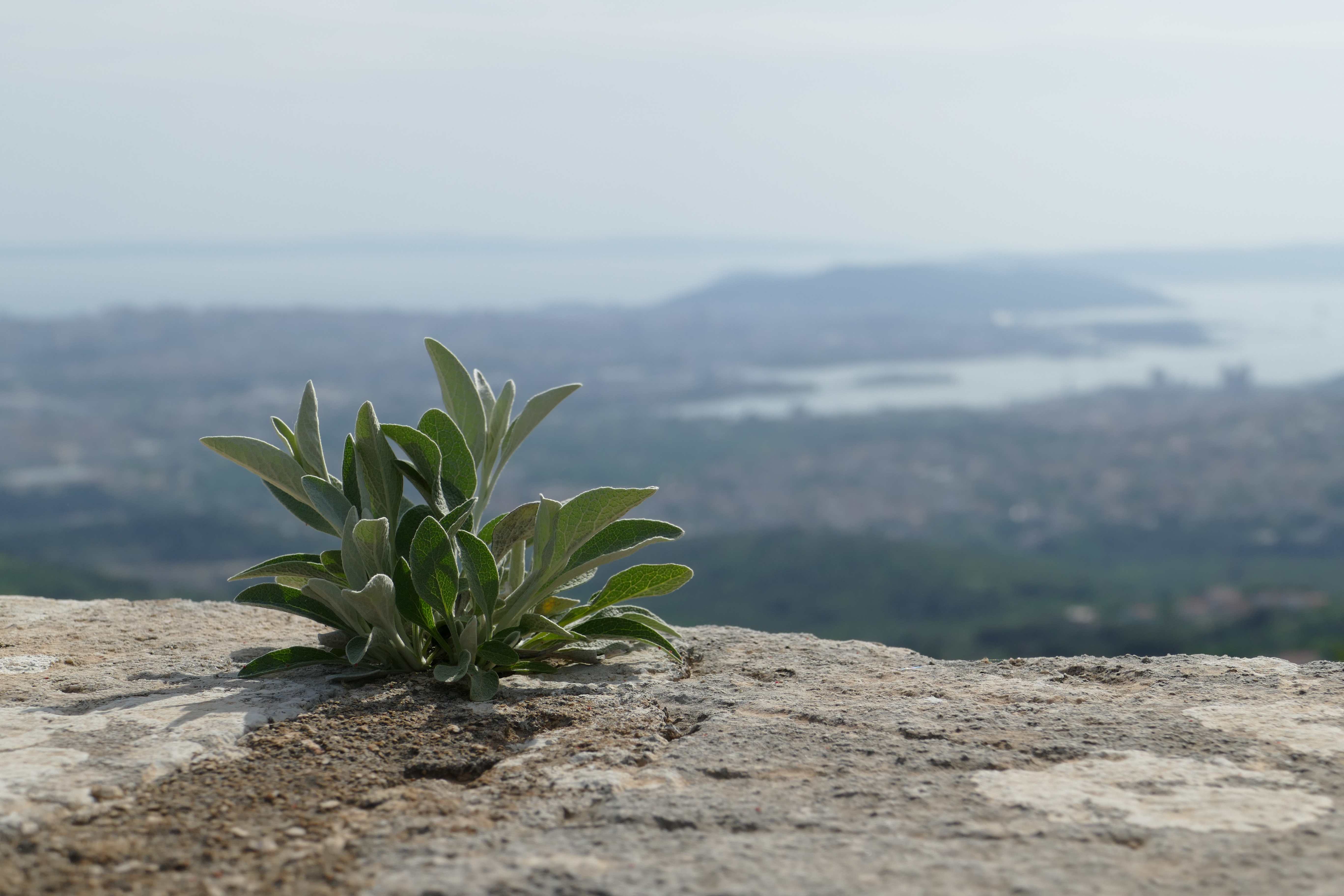 Inula Verbascifolia
Inula Verbascifolia
As we were making progress on the book, people in Klis began to find out what we were doing. It ended up becoming a project of the wider community. The mayor of Klis supported the project financially so that we were able to publish the book professionally and the library of Klis edited and published the book. Ephedra major
Ephedra major
Others contributed to the design of the book and the translations, of course. Almost all of them donated their time and work to the project for free. It is quite difficult to translate some of this specific text correctly and we wanted to get it absolutely right.  Agave americana
Agave americana
In the end, we ended up getting contributions from Italy and France, we had one colleague from the French embassy who helped and some of the best botanists we have in Croatia contributed to the book to make sure everything was absolutely correct. For that reason, the book was approved and recommended by the Botanical Society of Croatia and can be found in the Botanical library.
All images © Ivan Limić / The Plants of Klis Fortress


